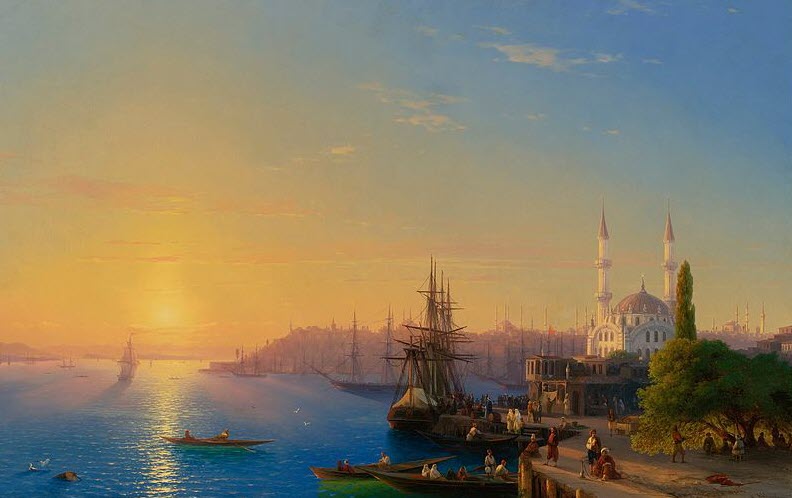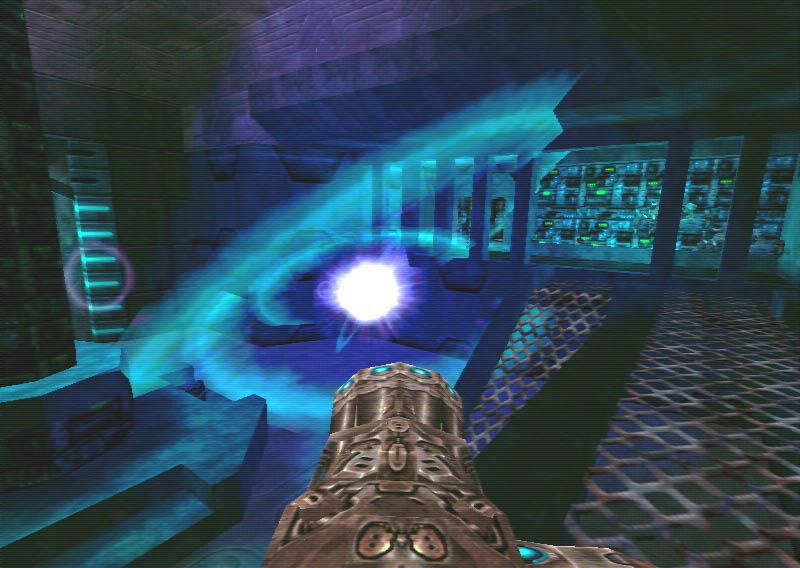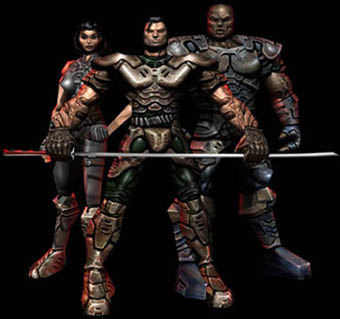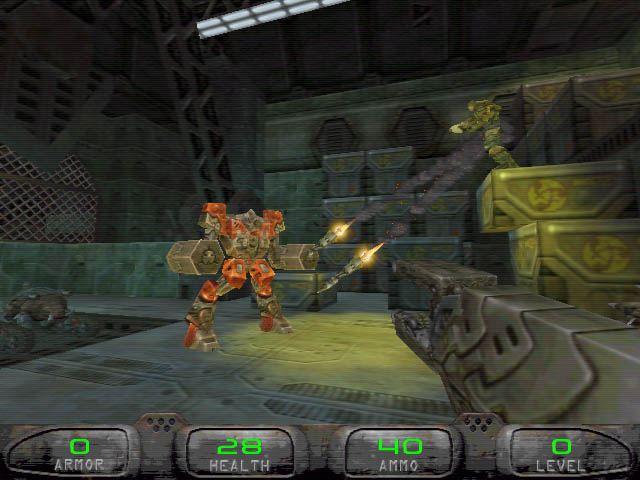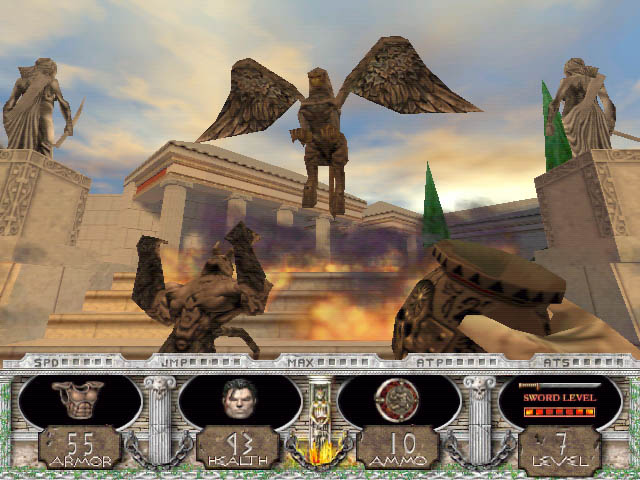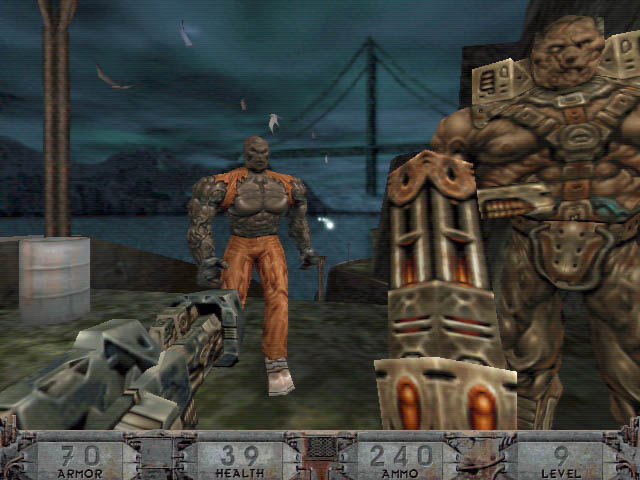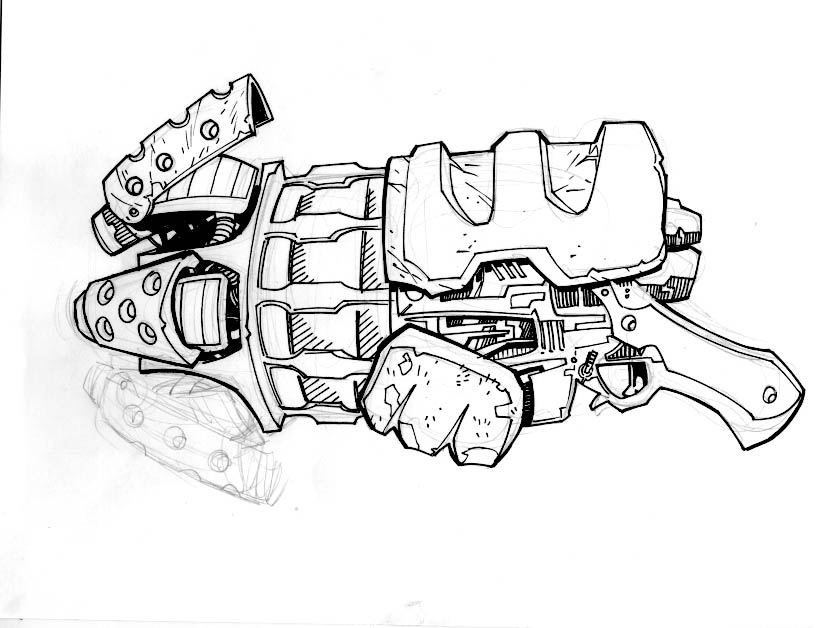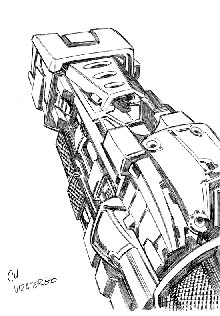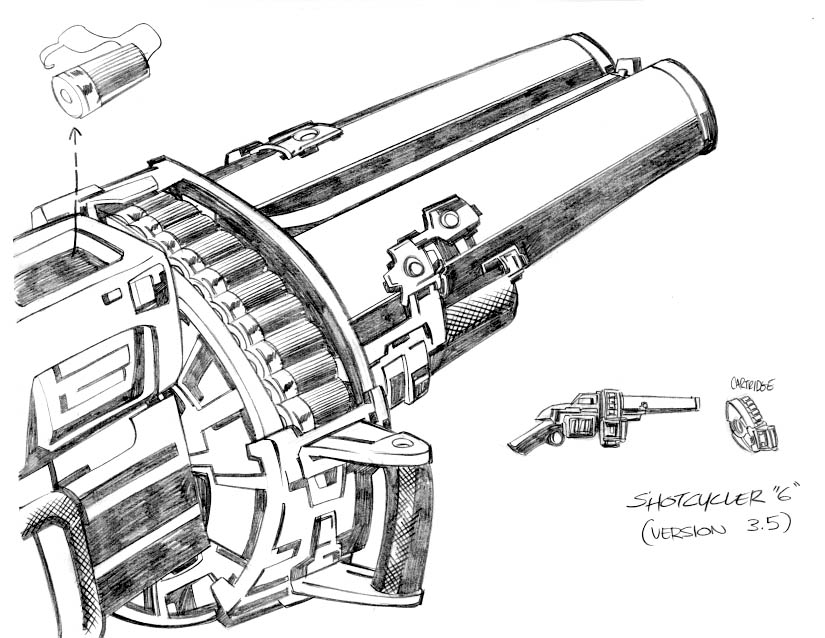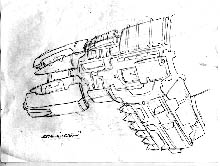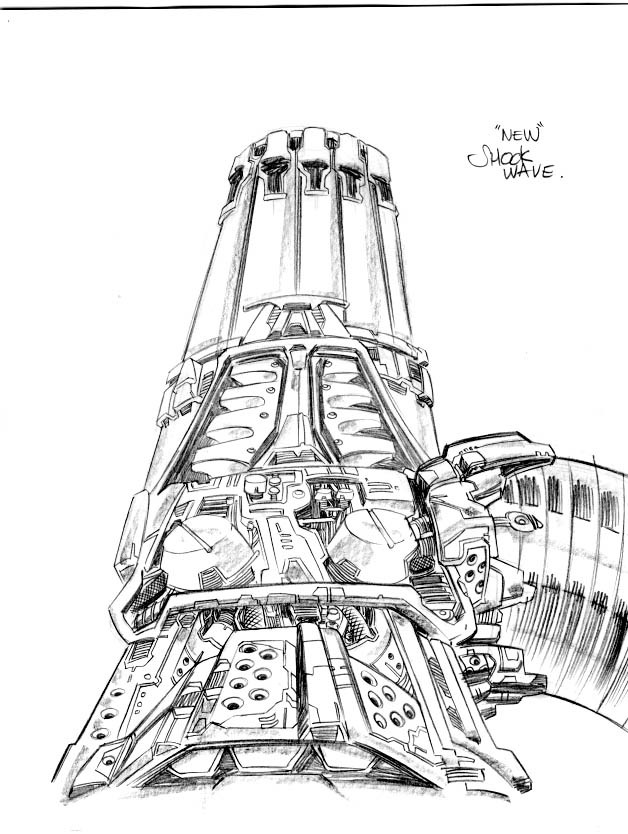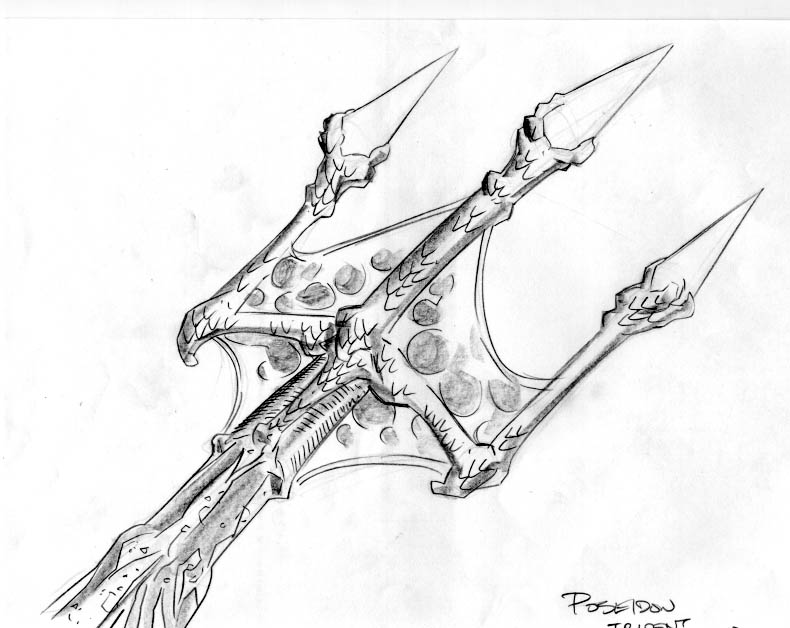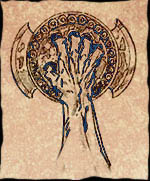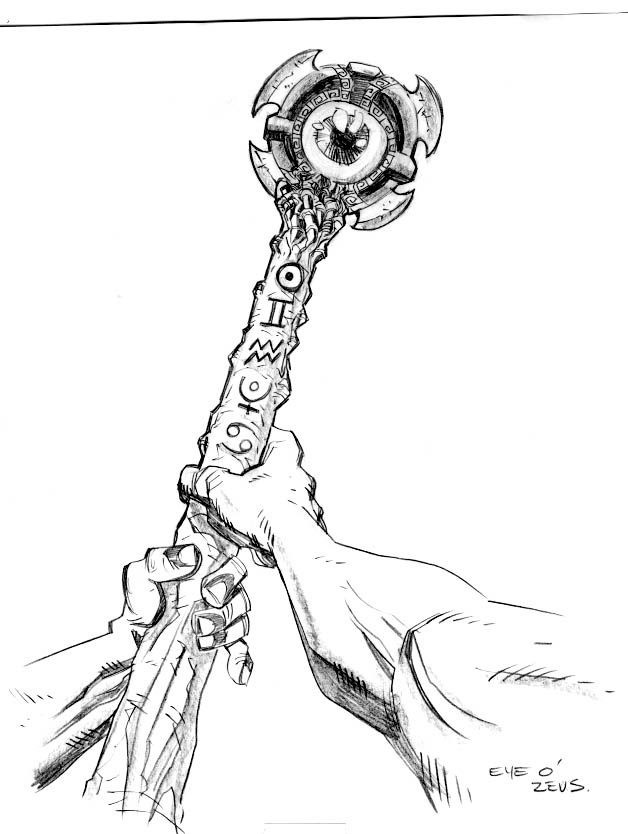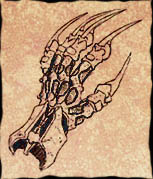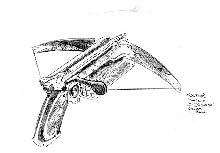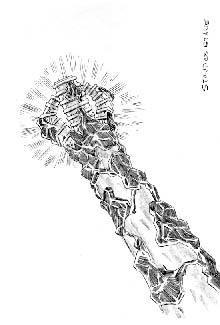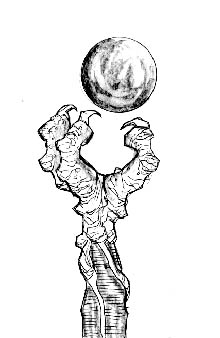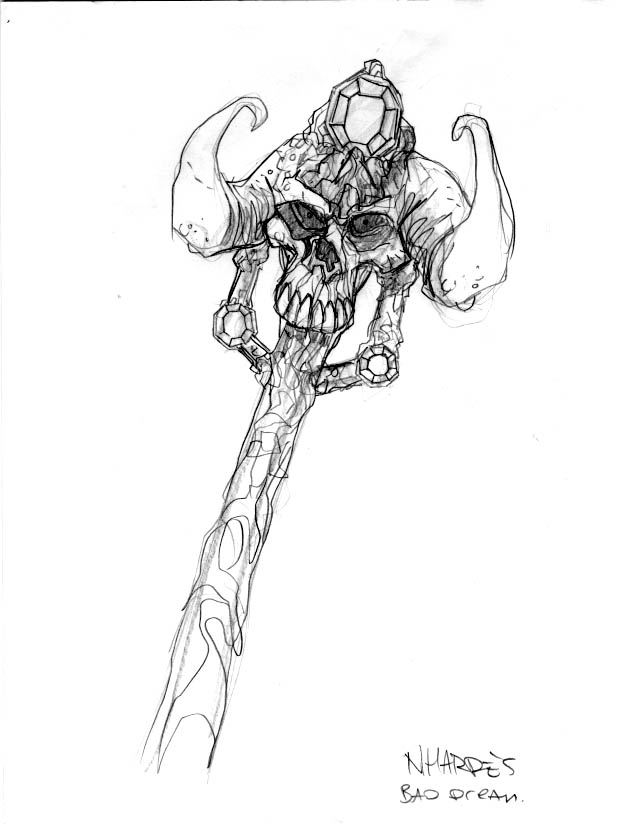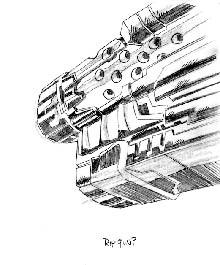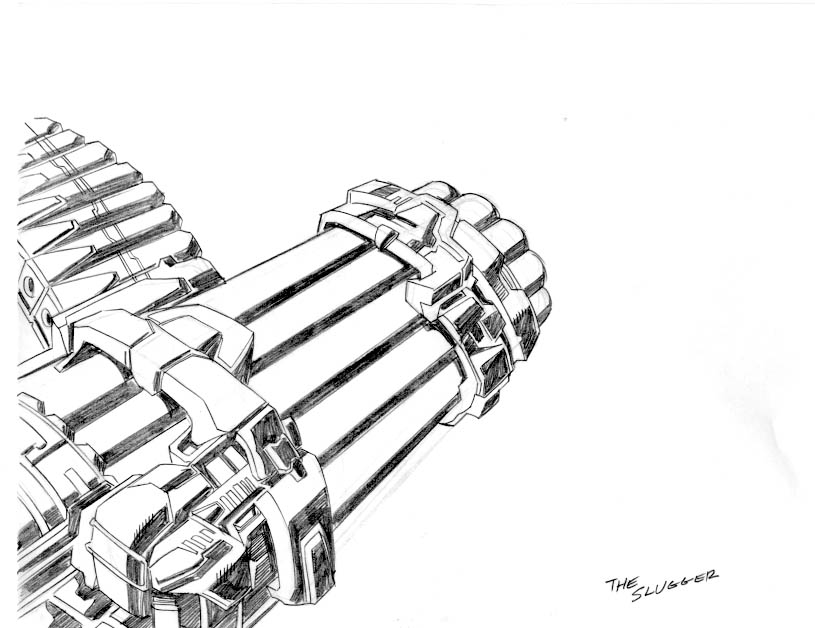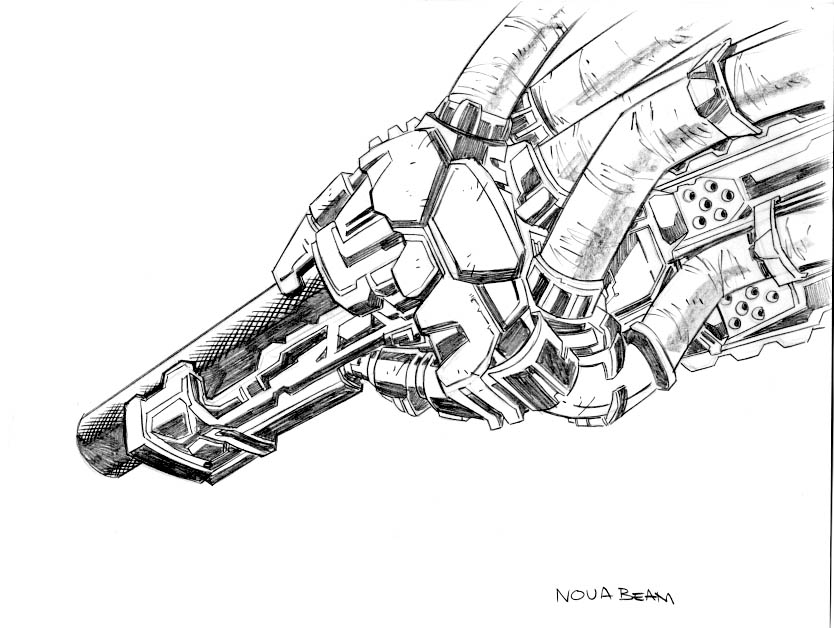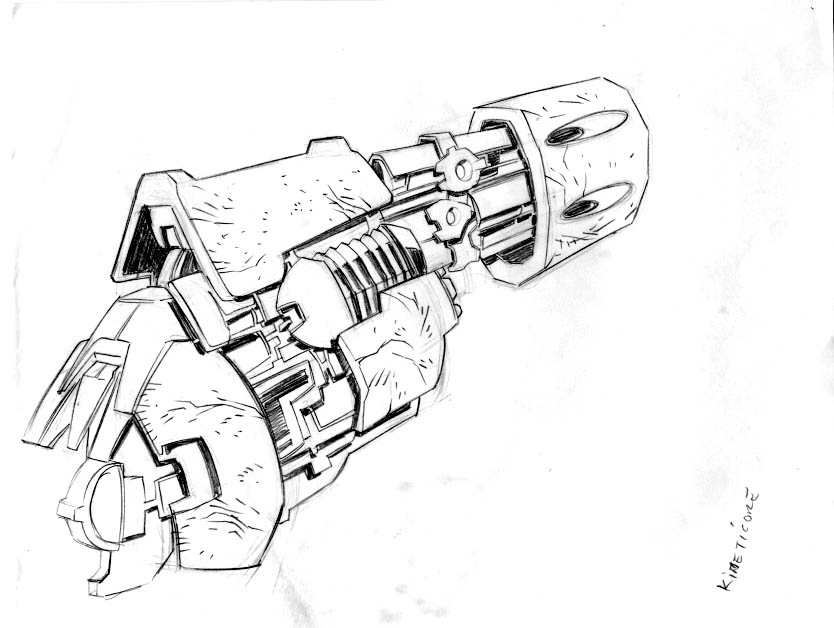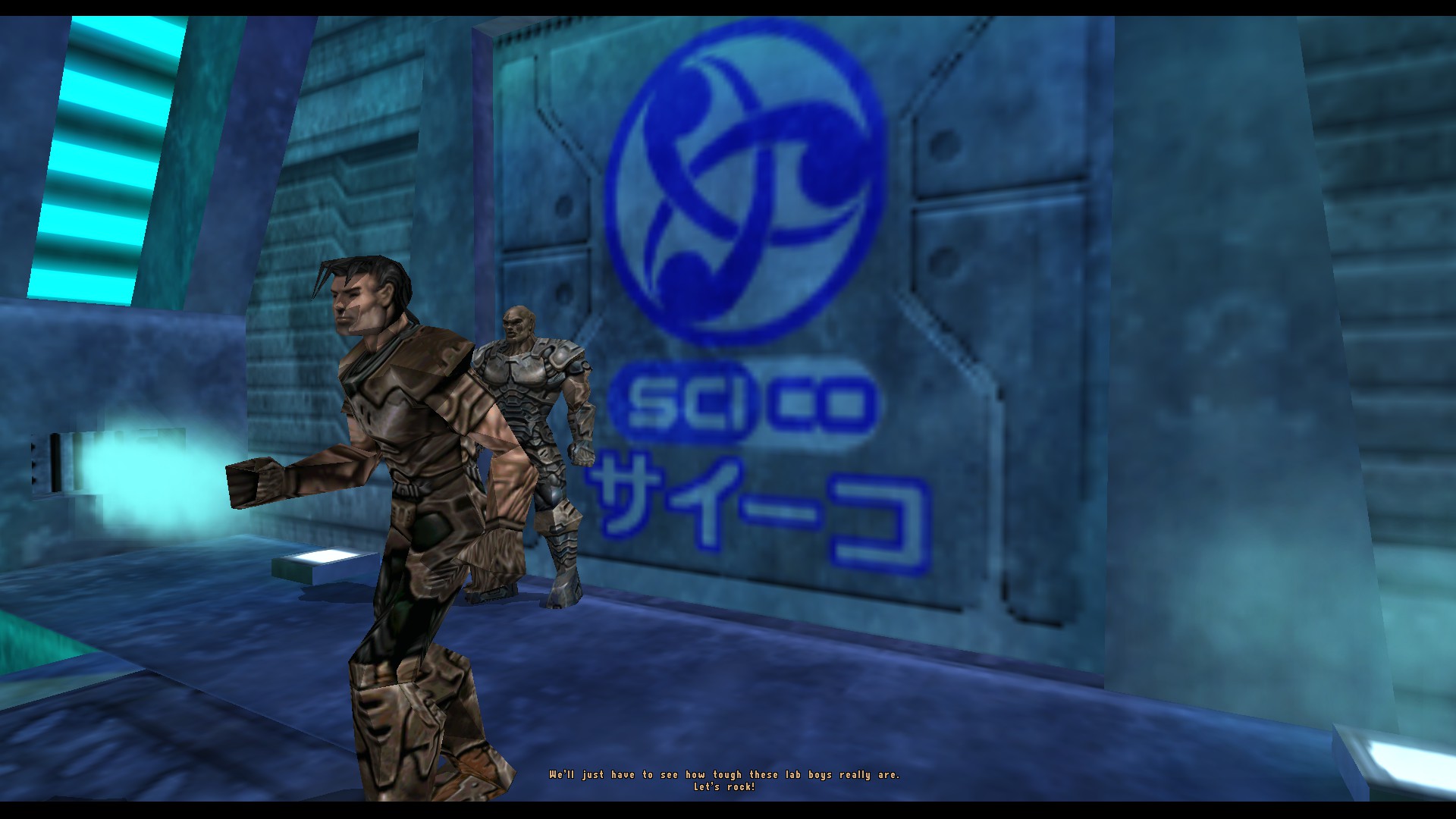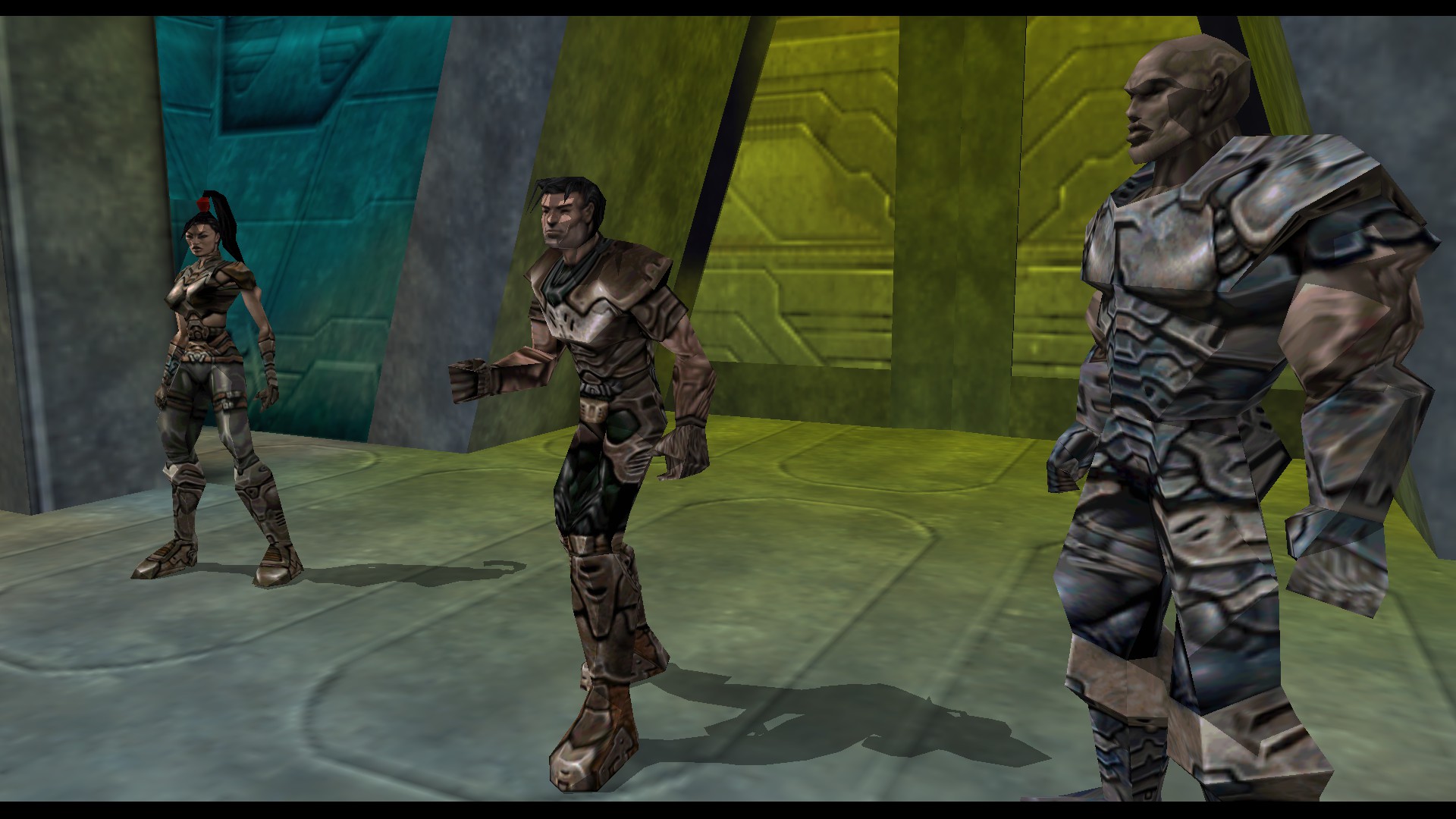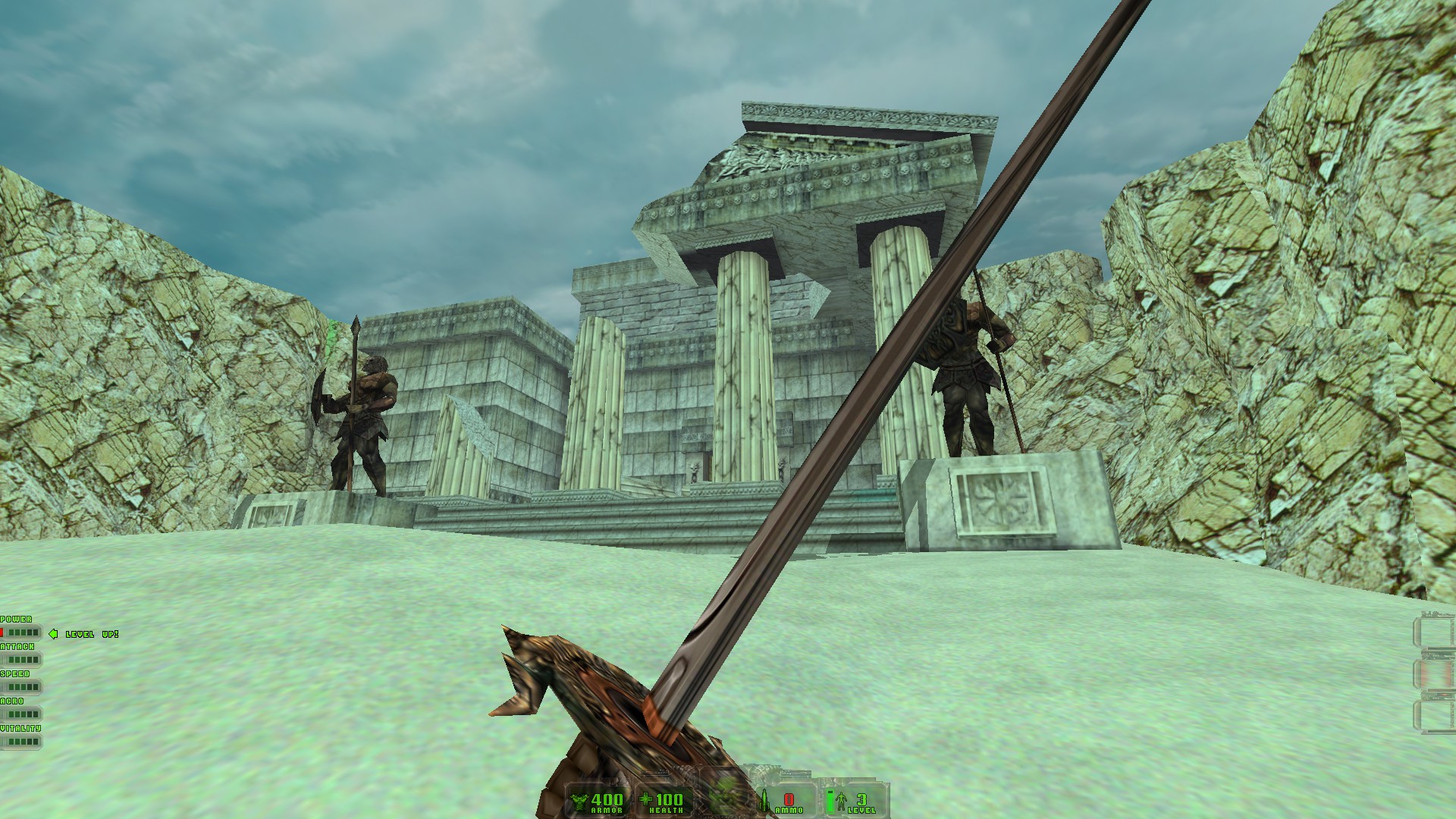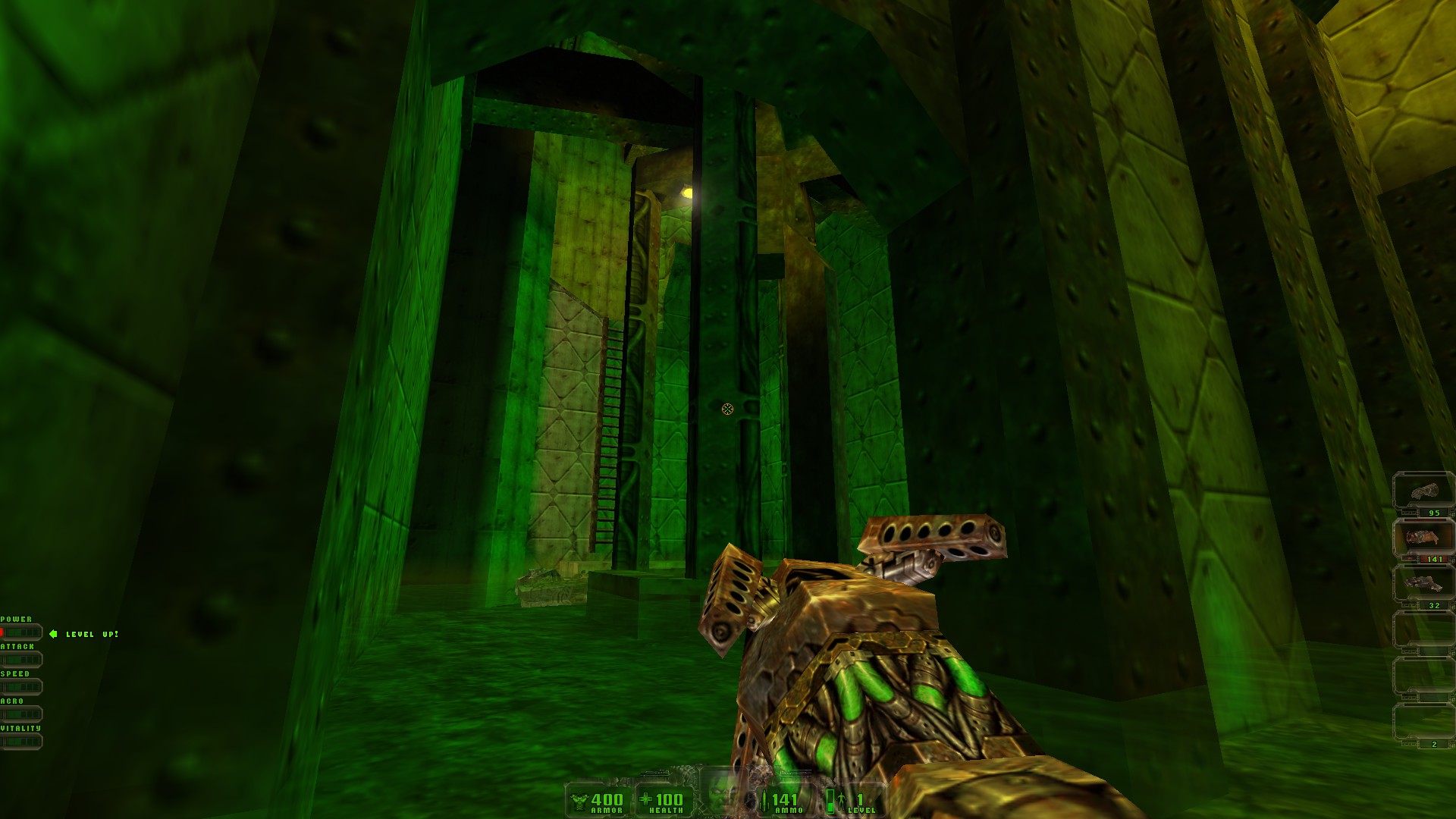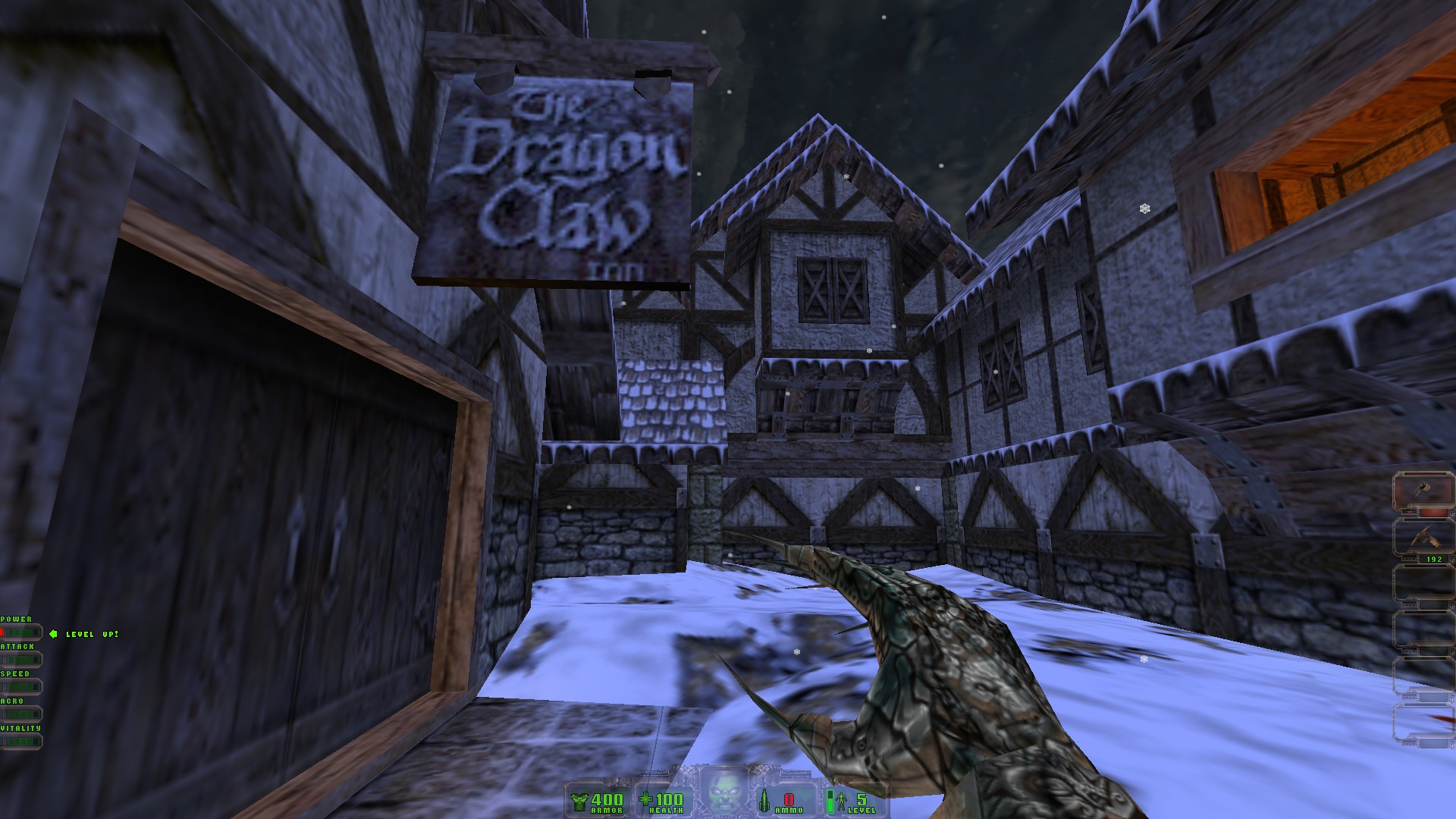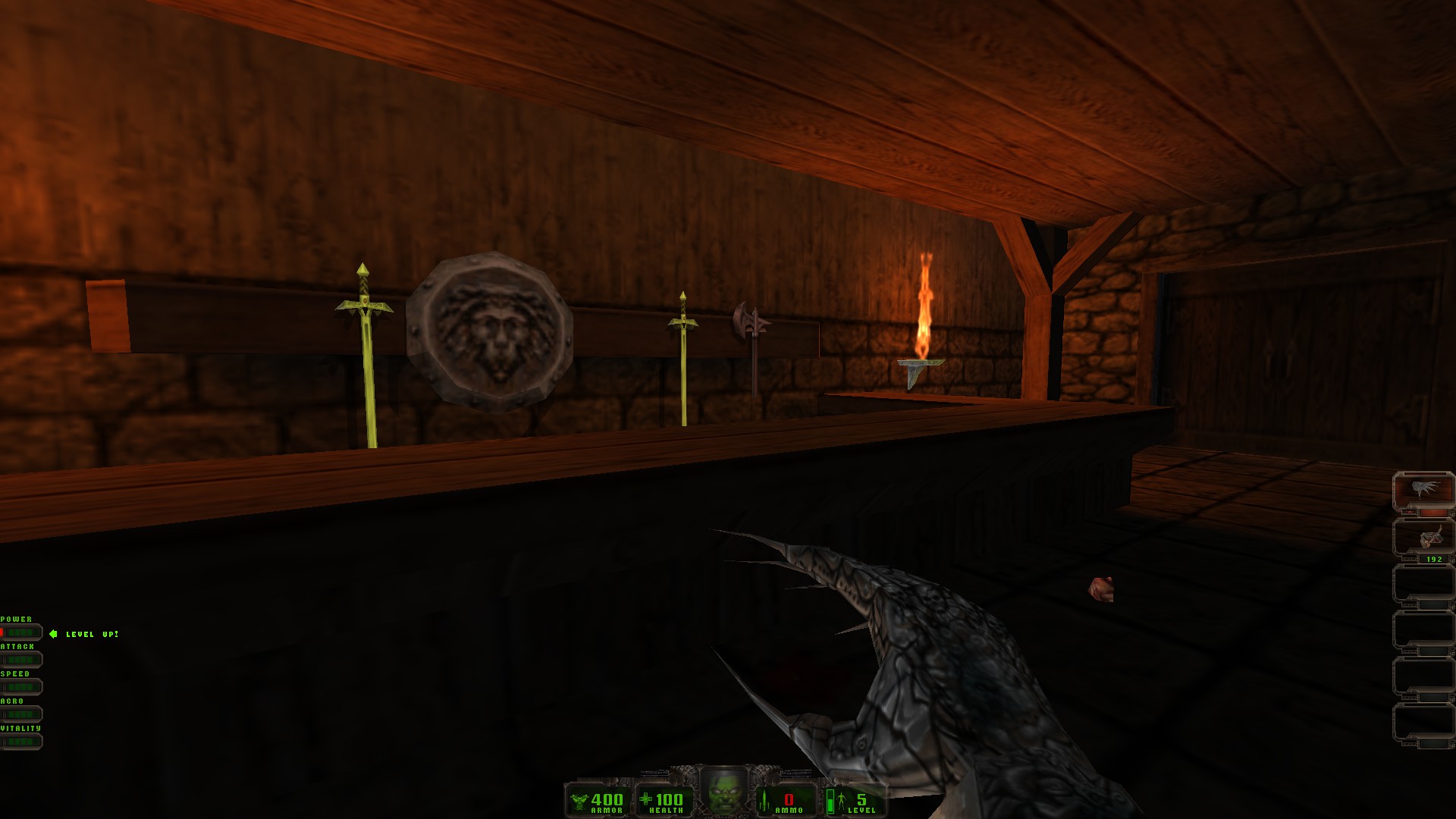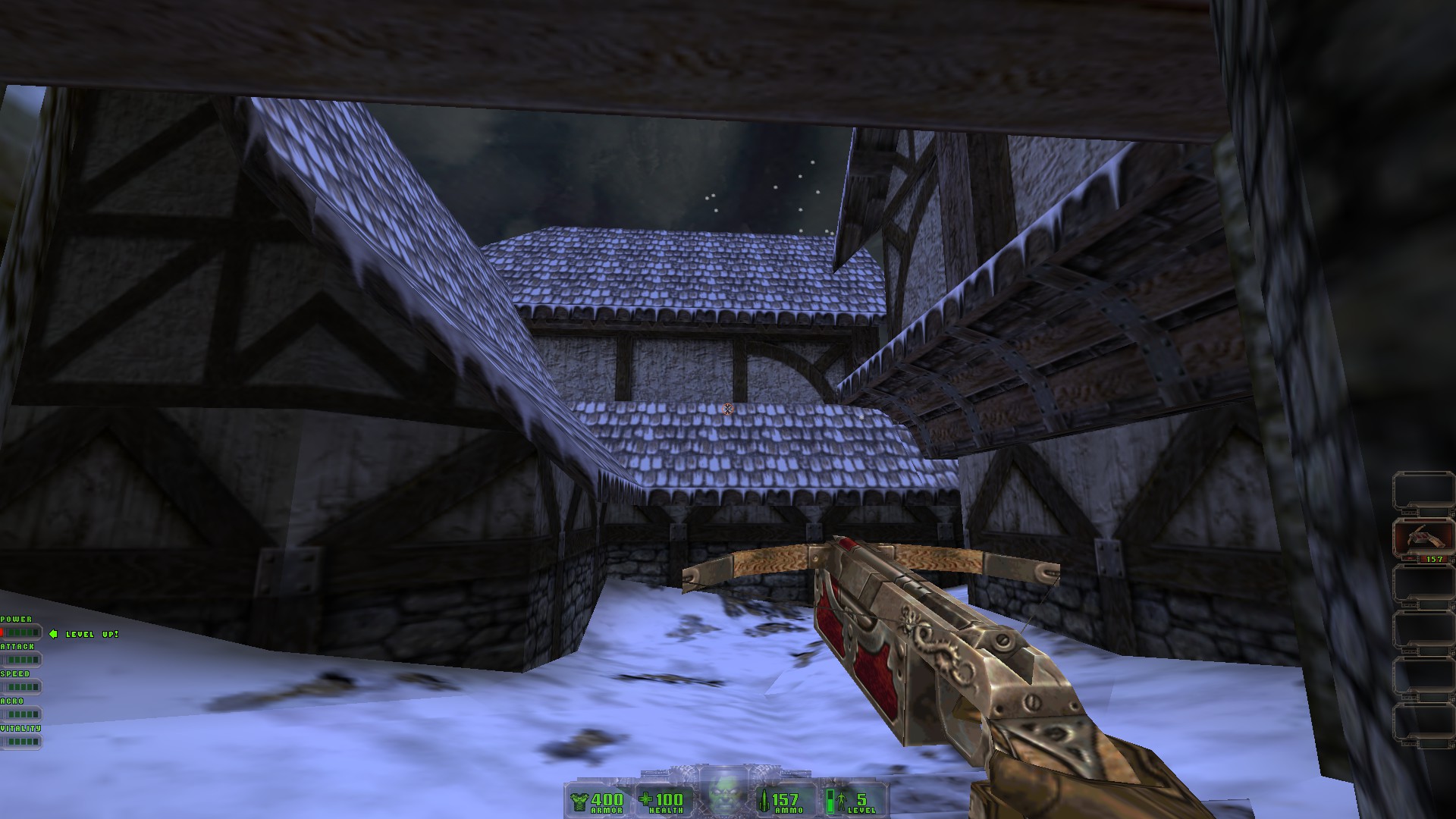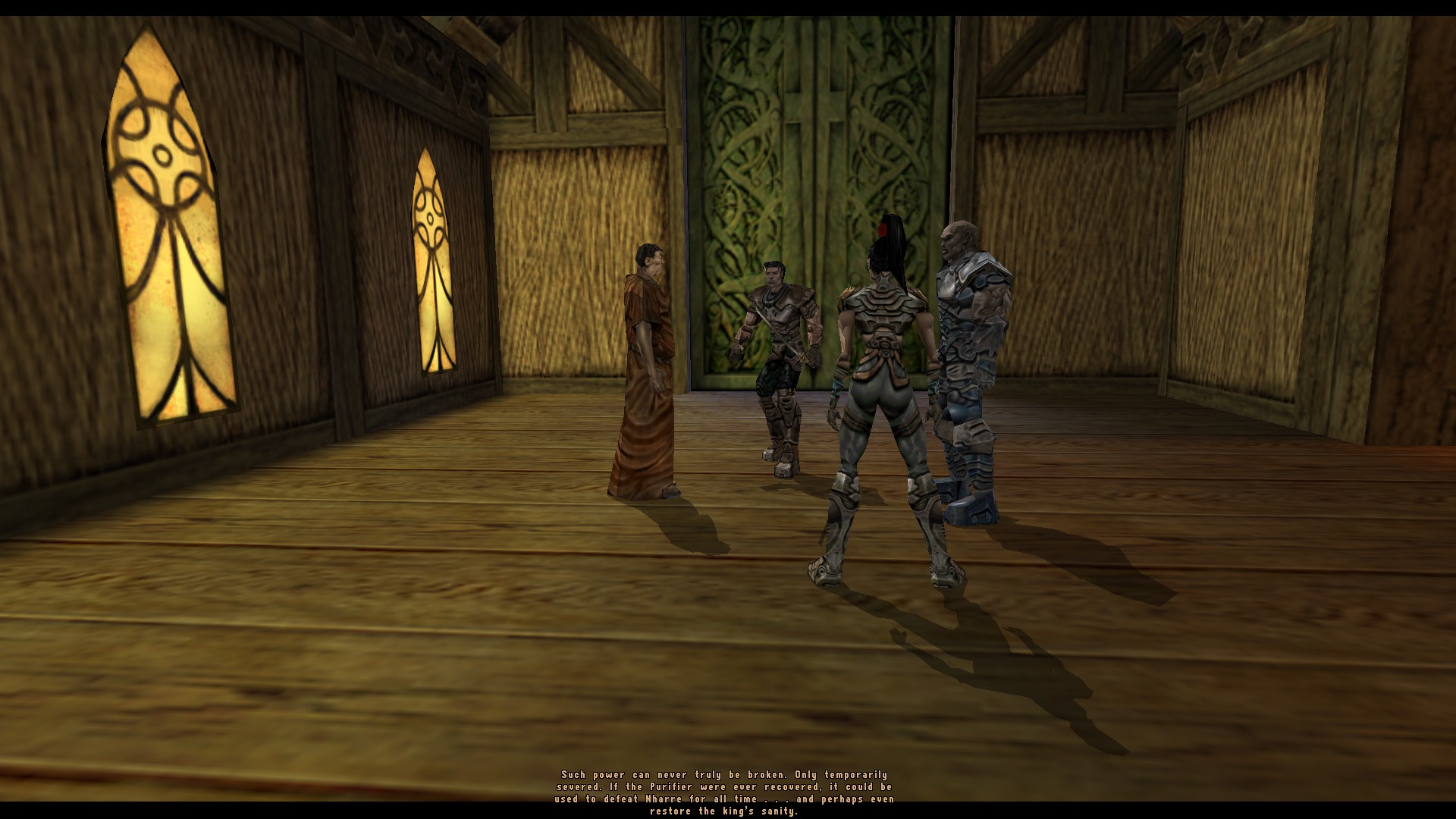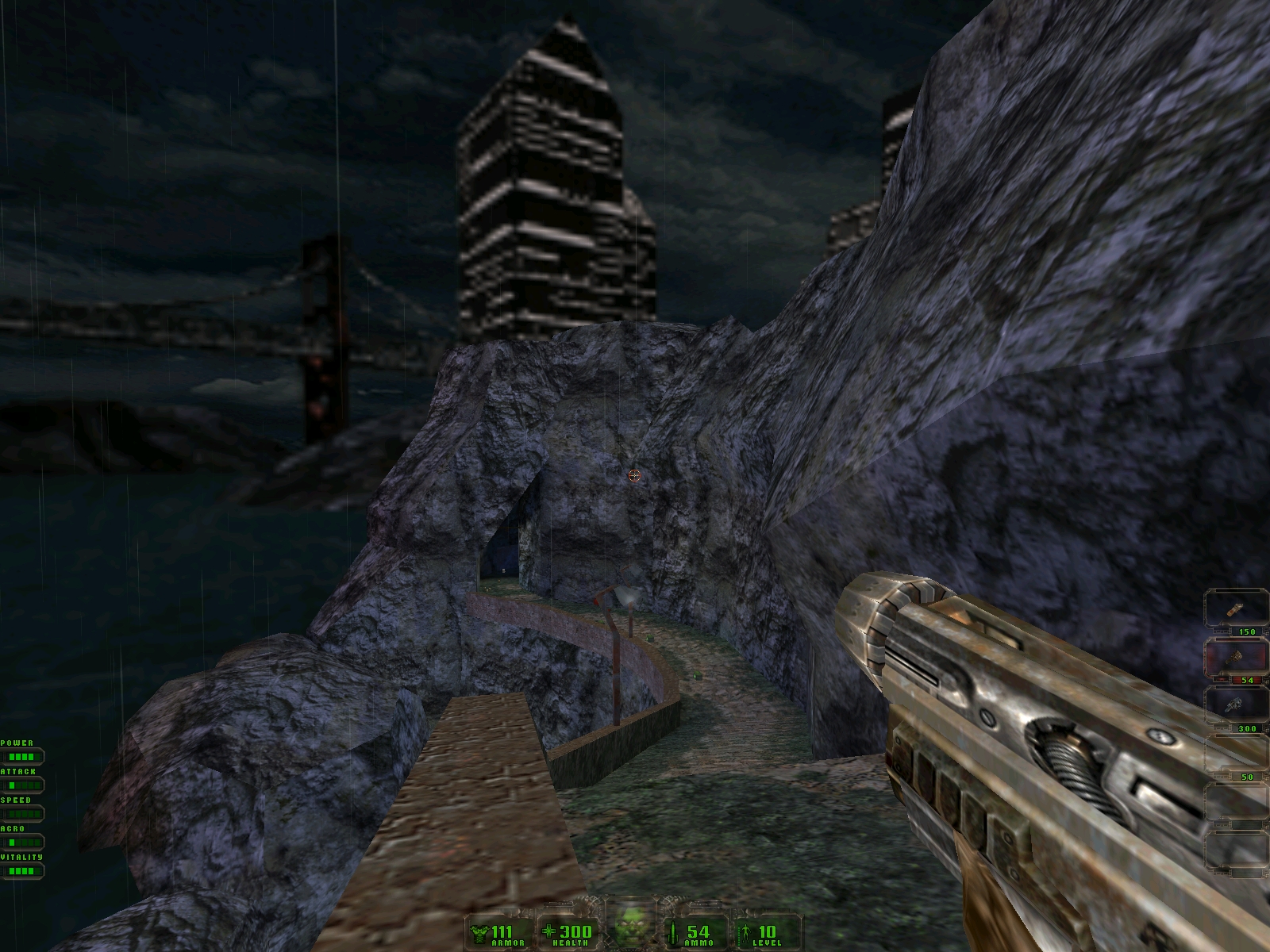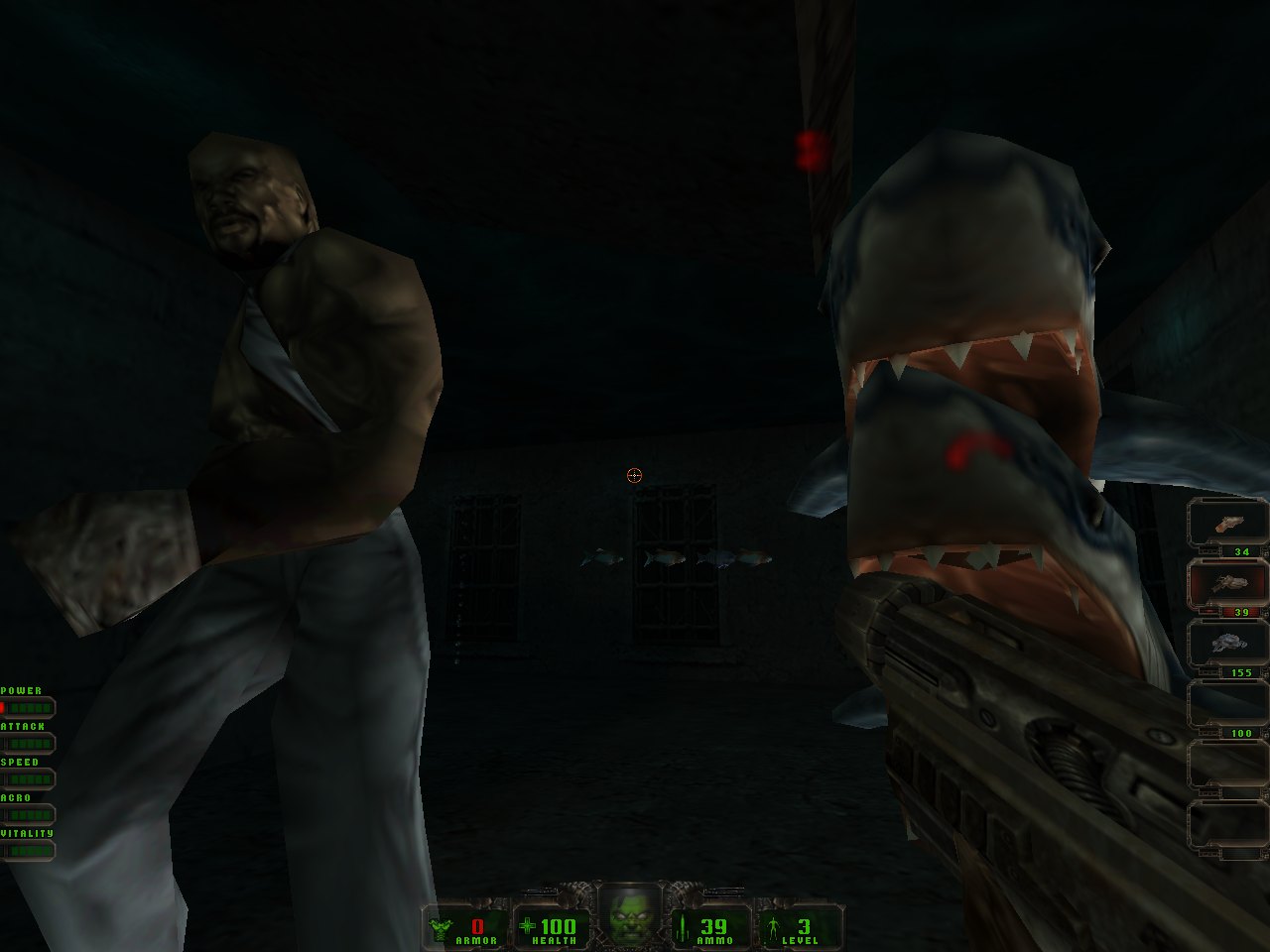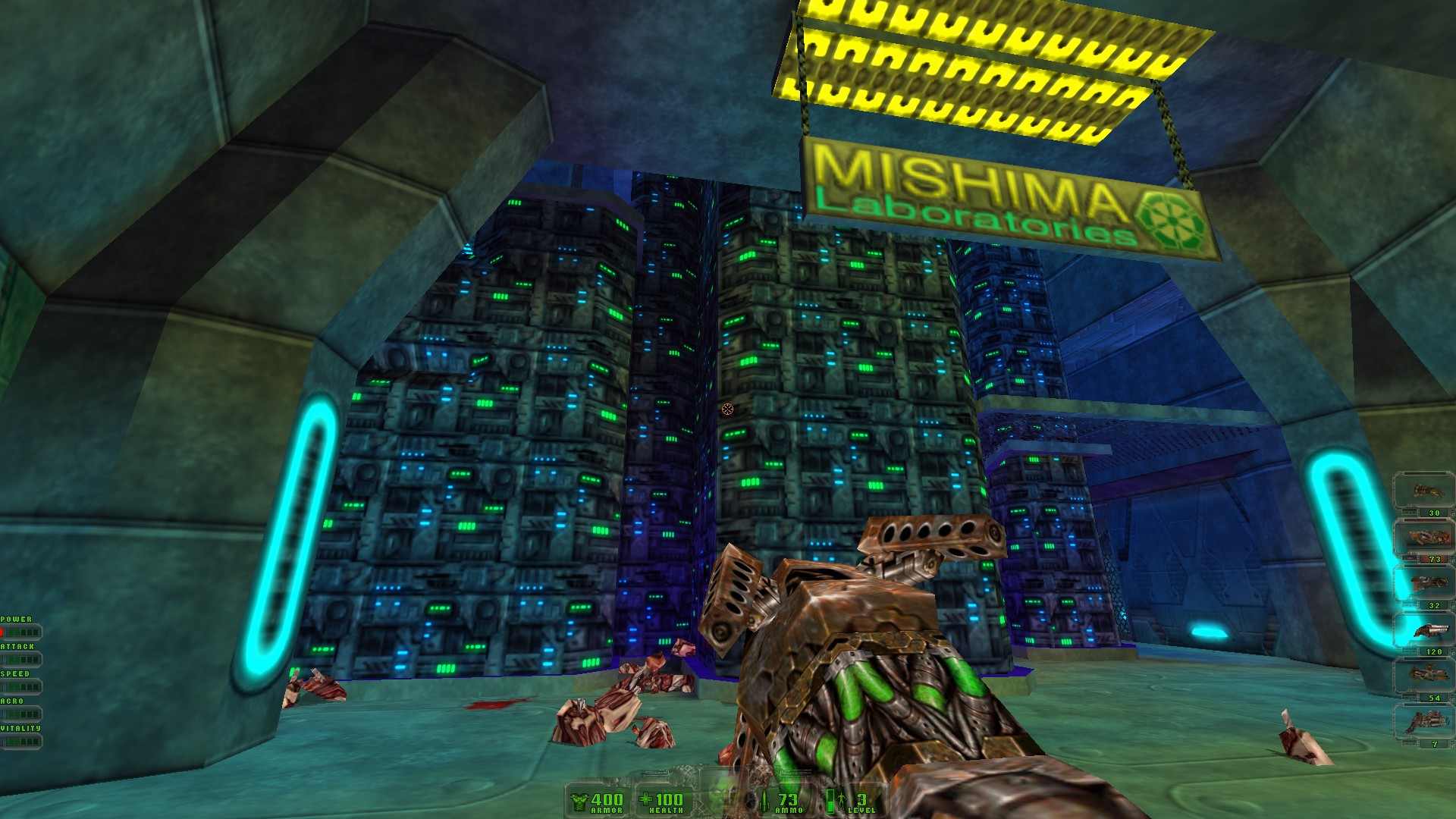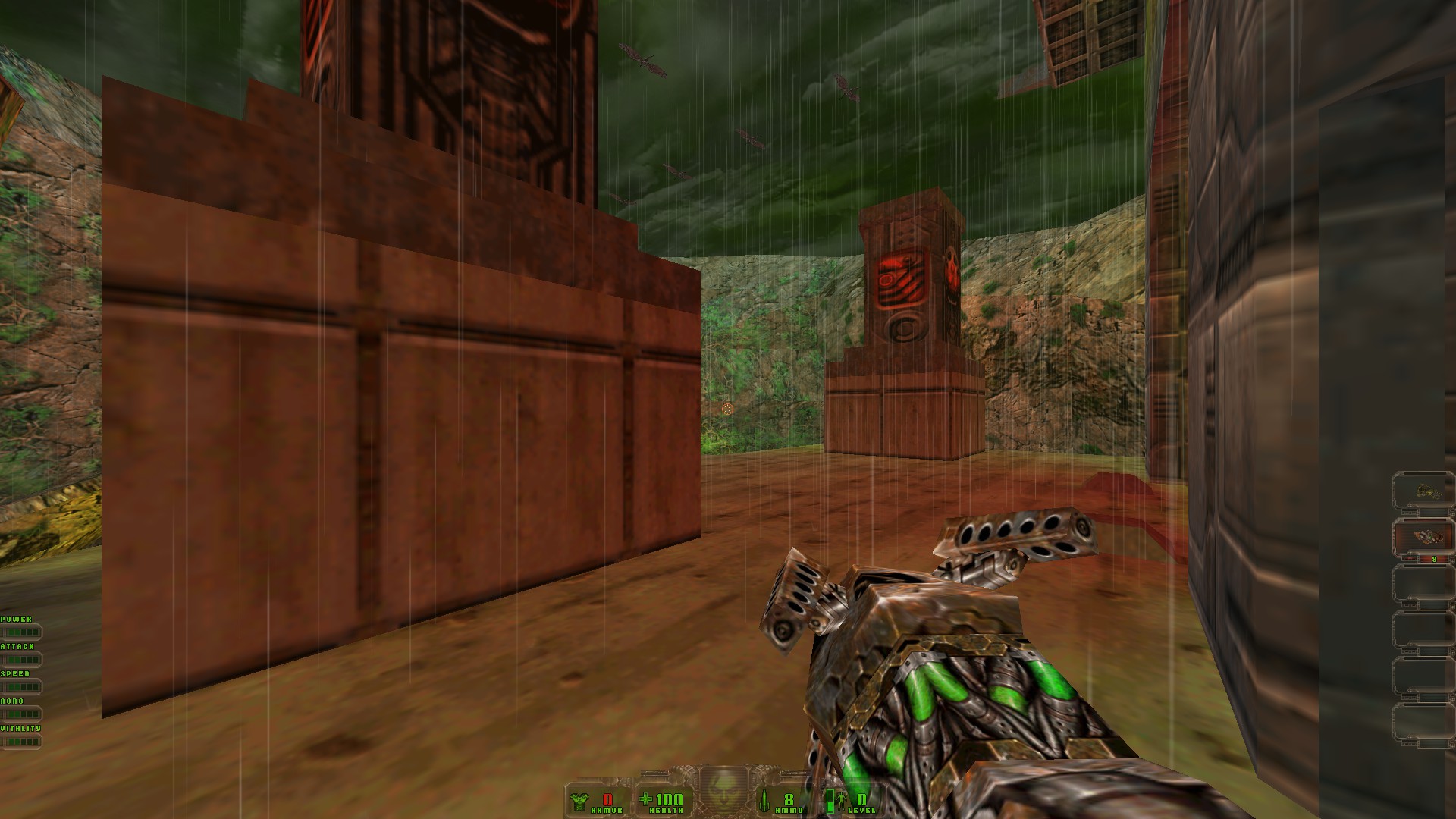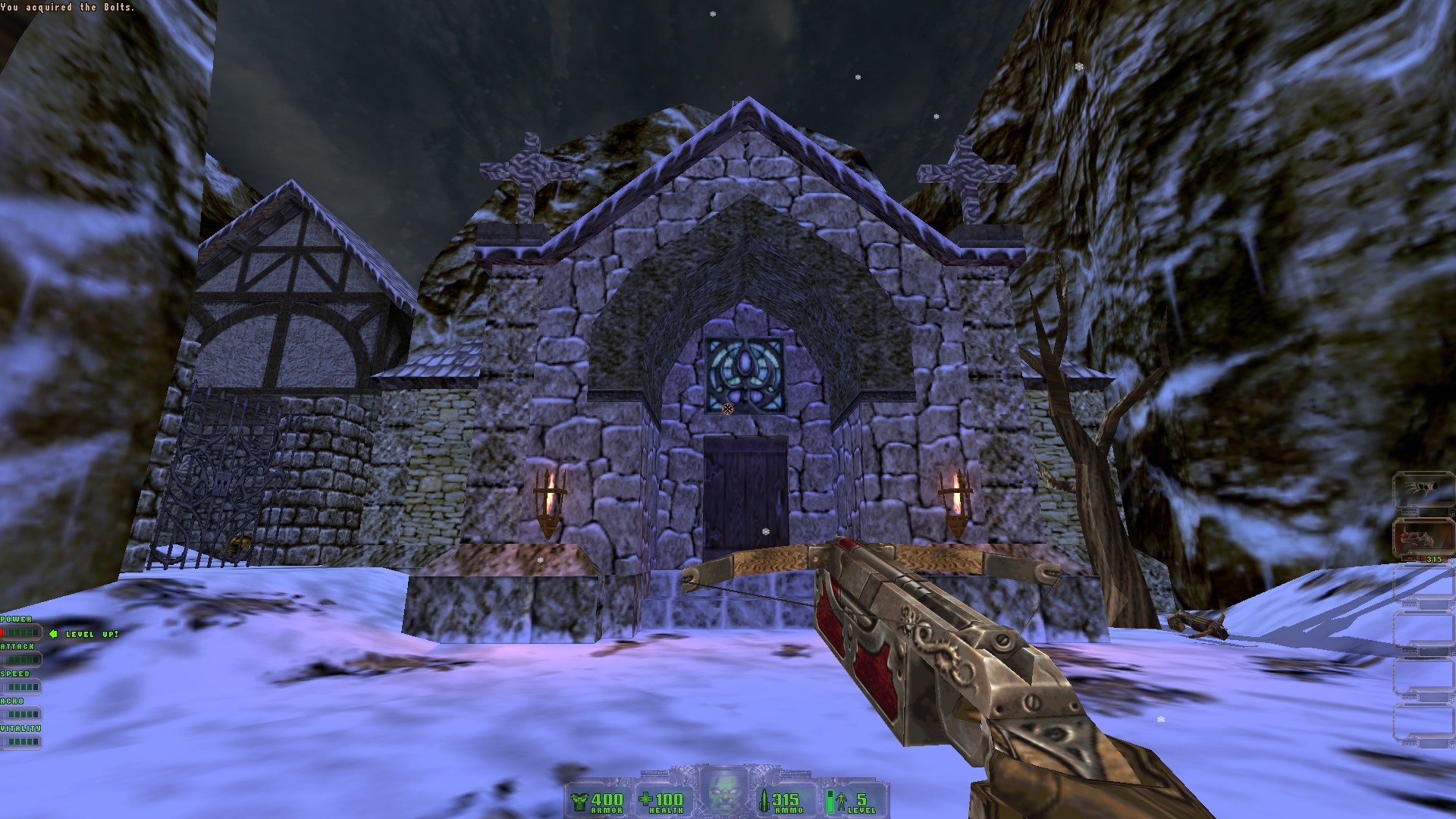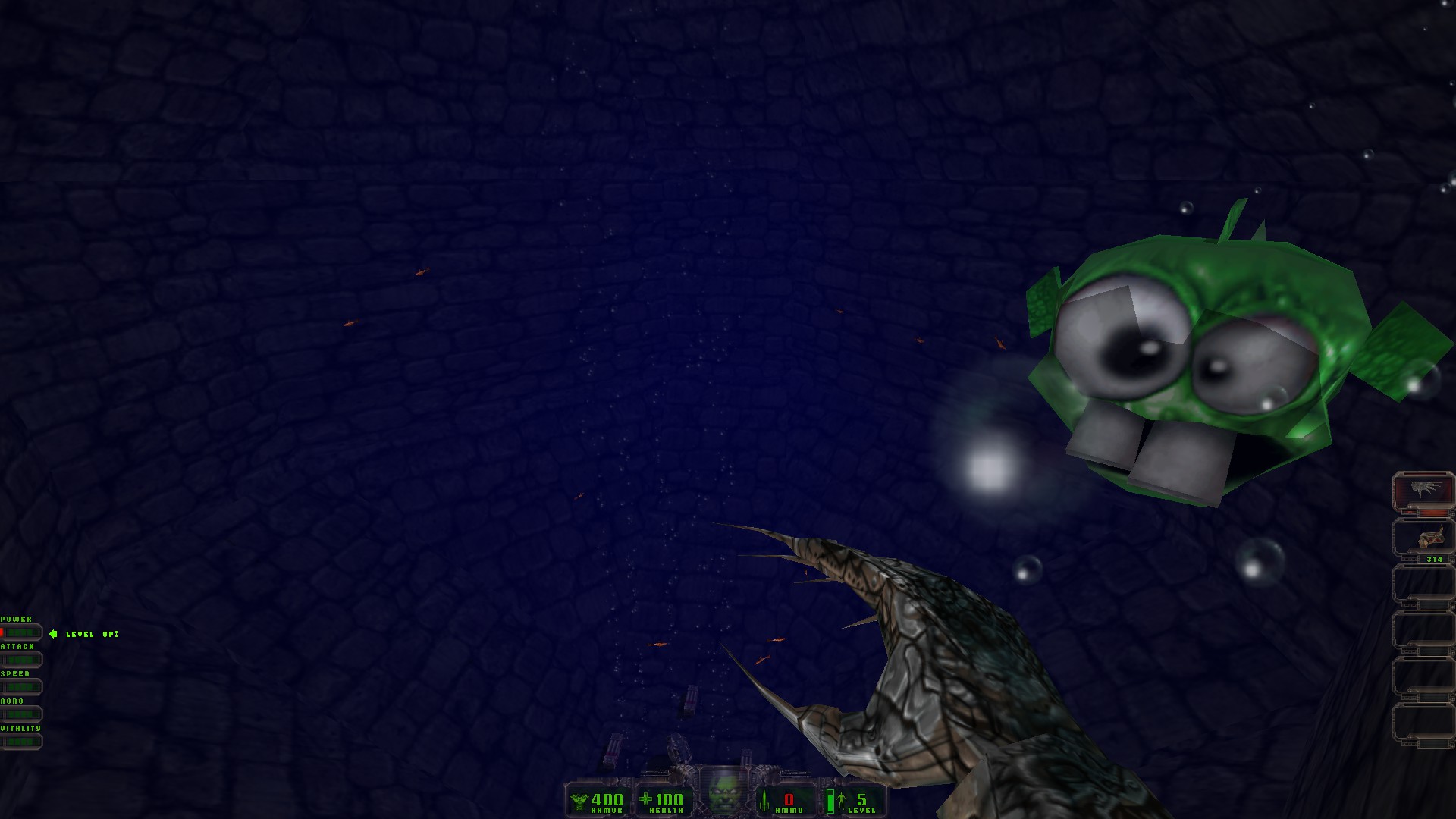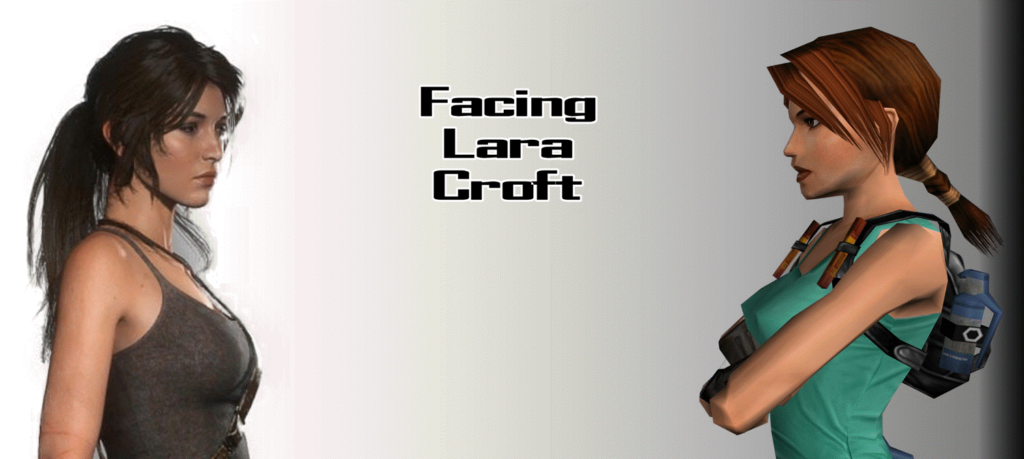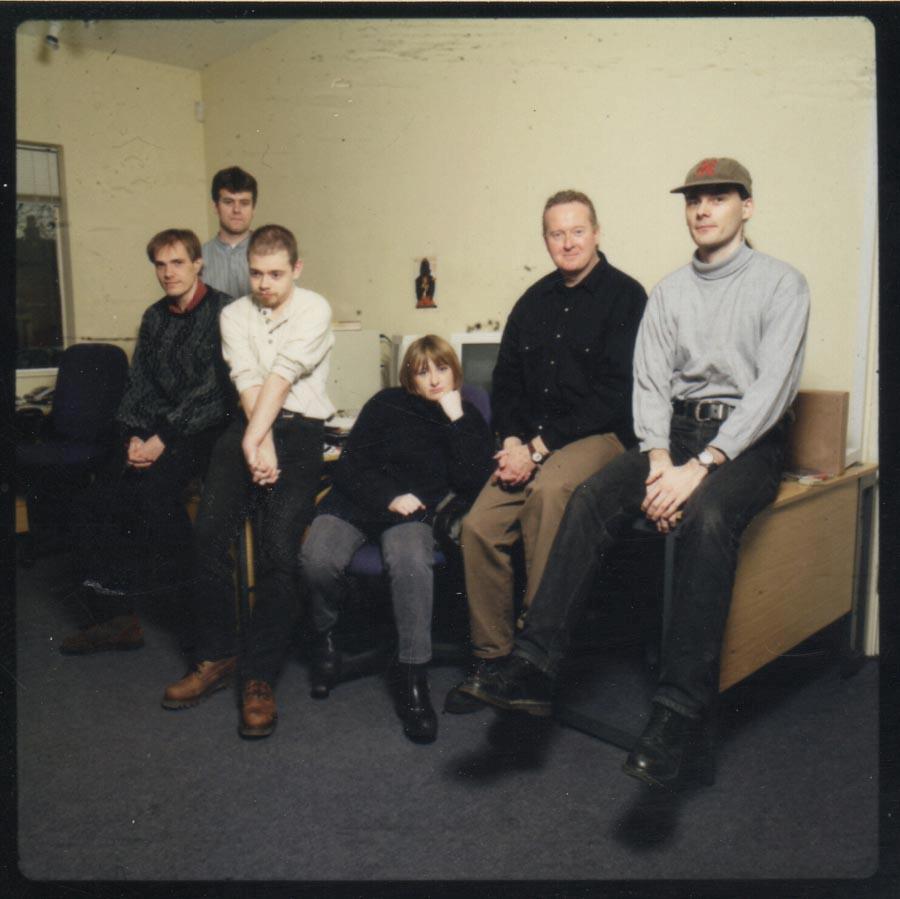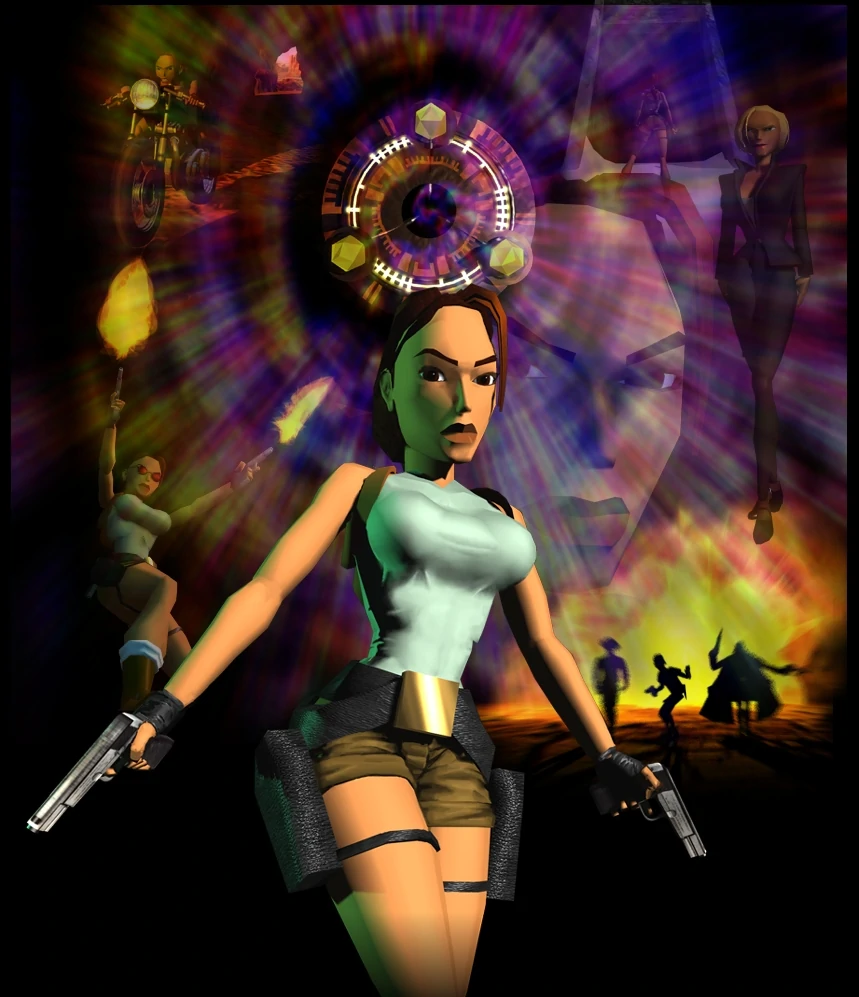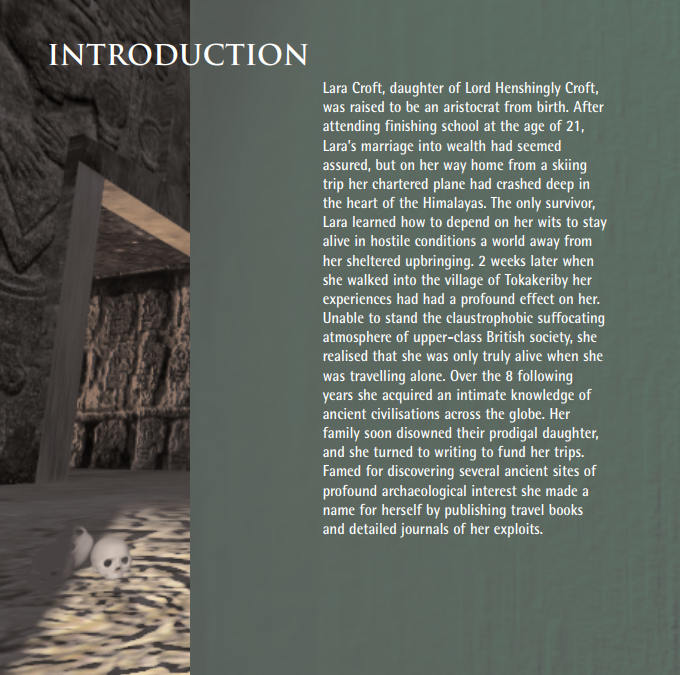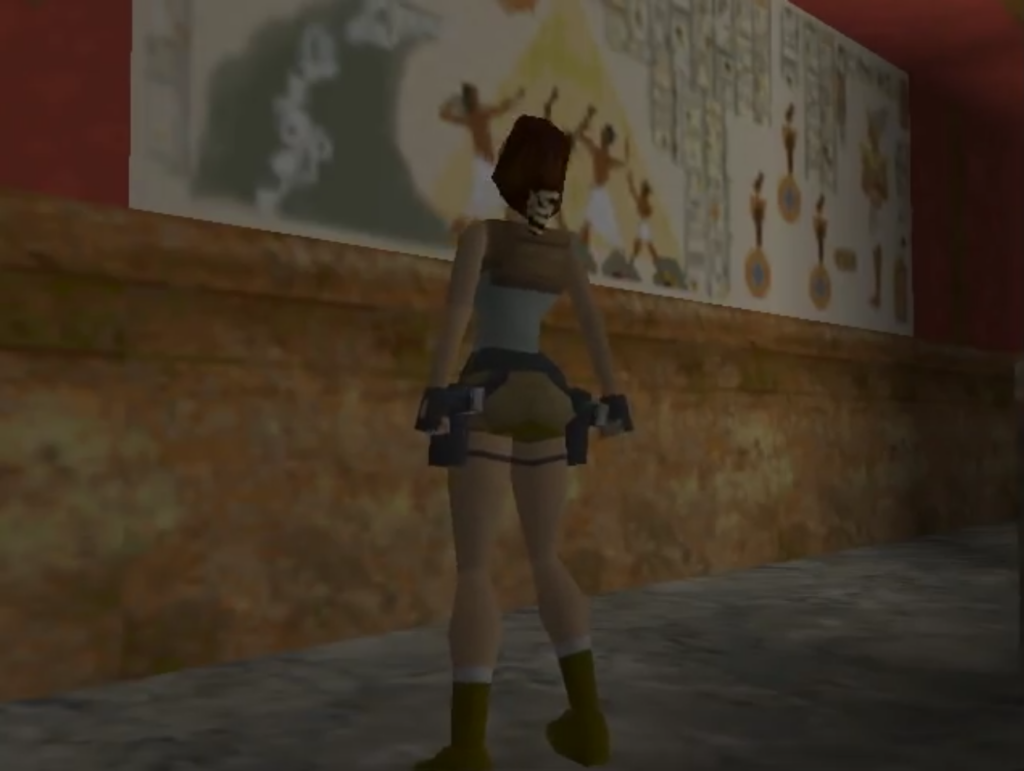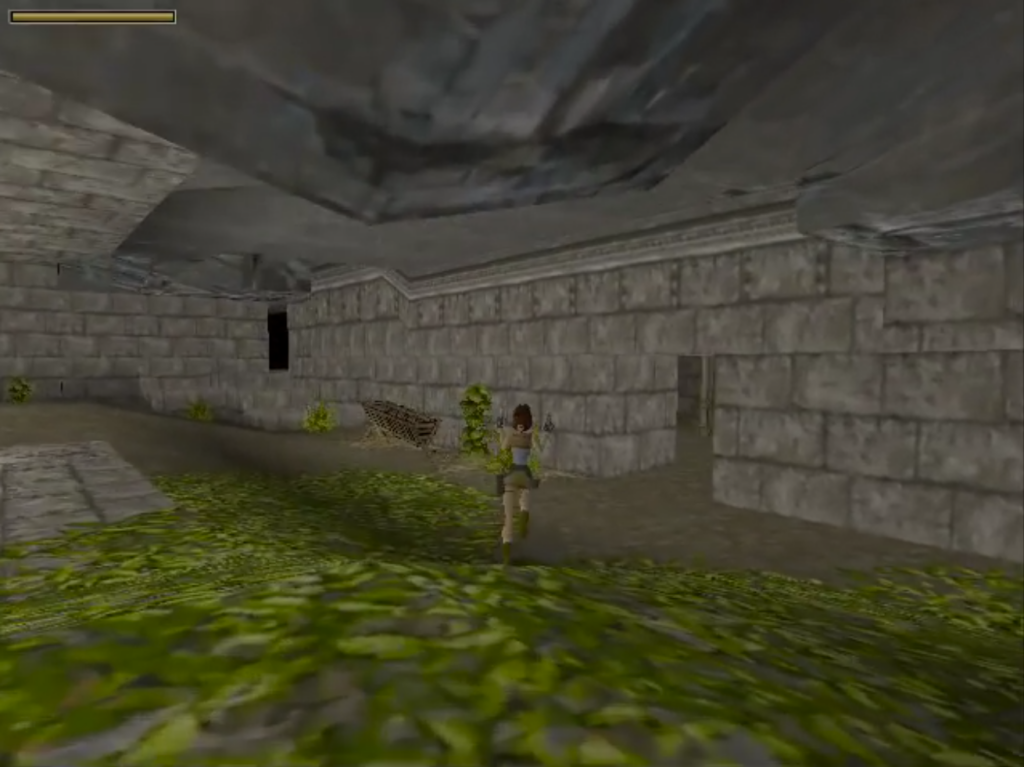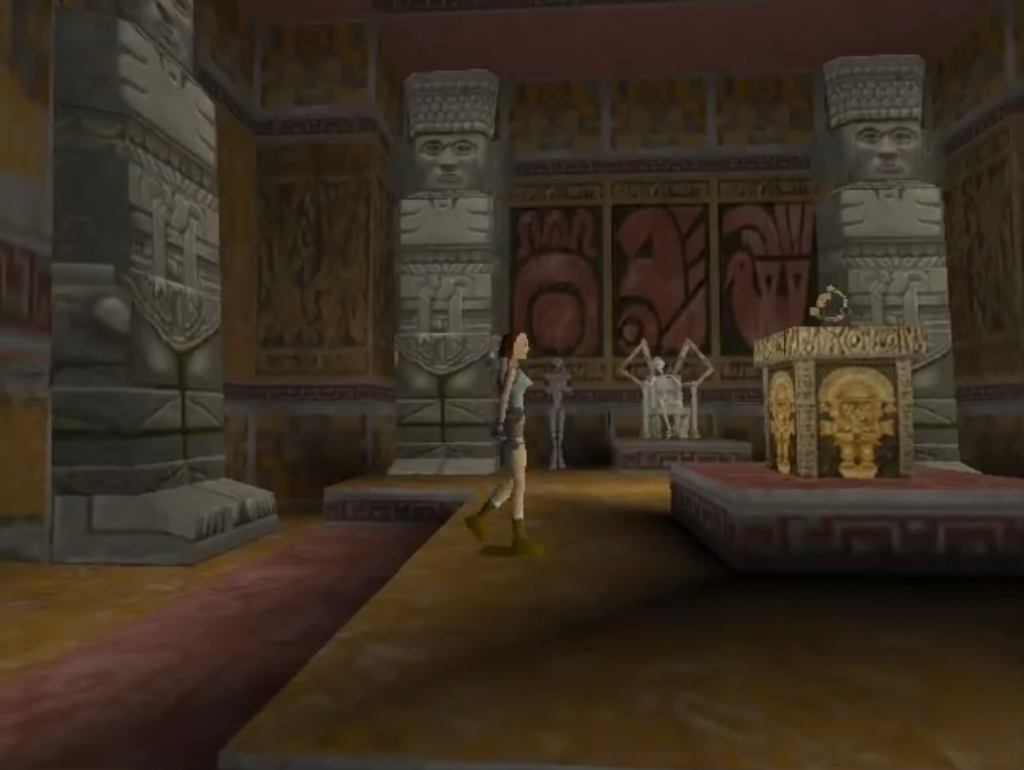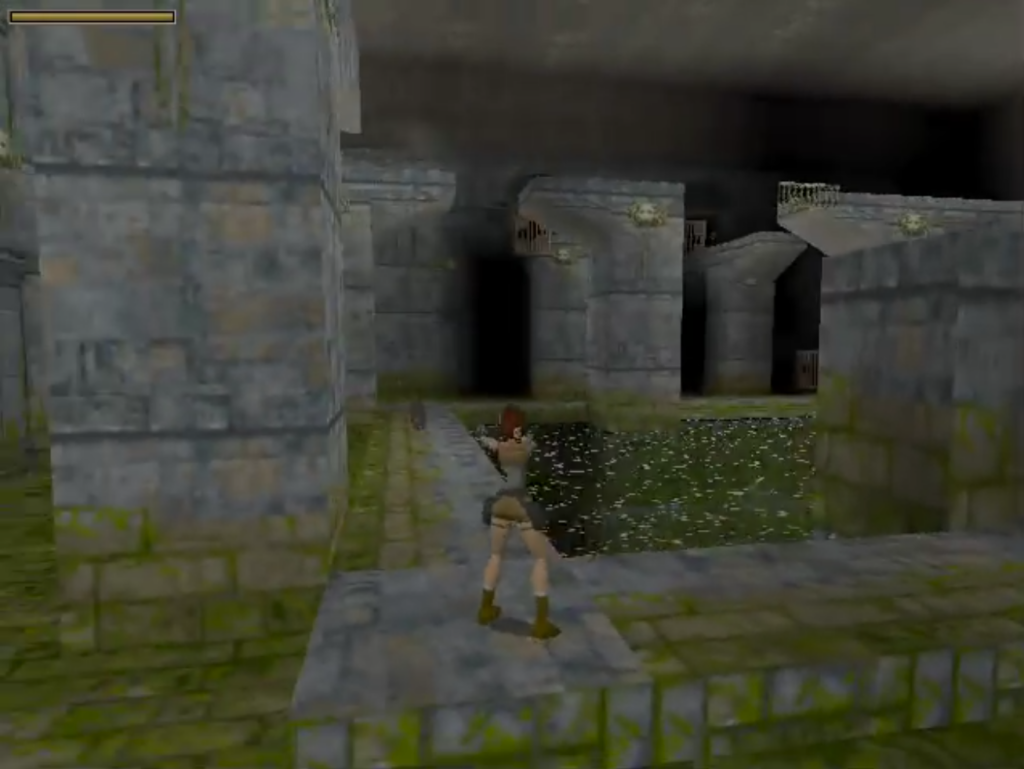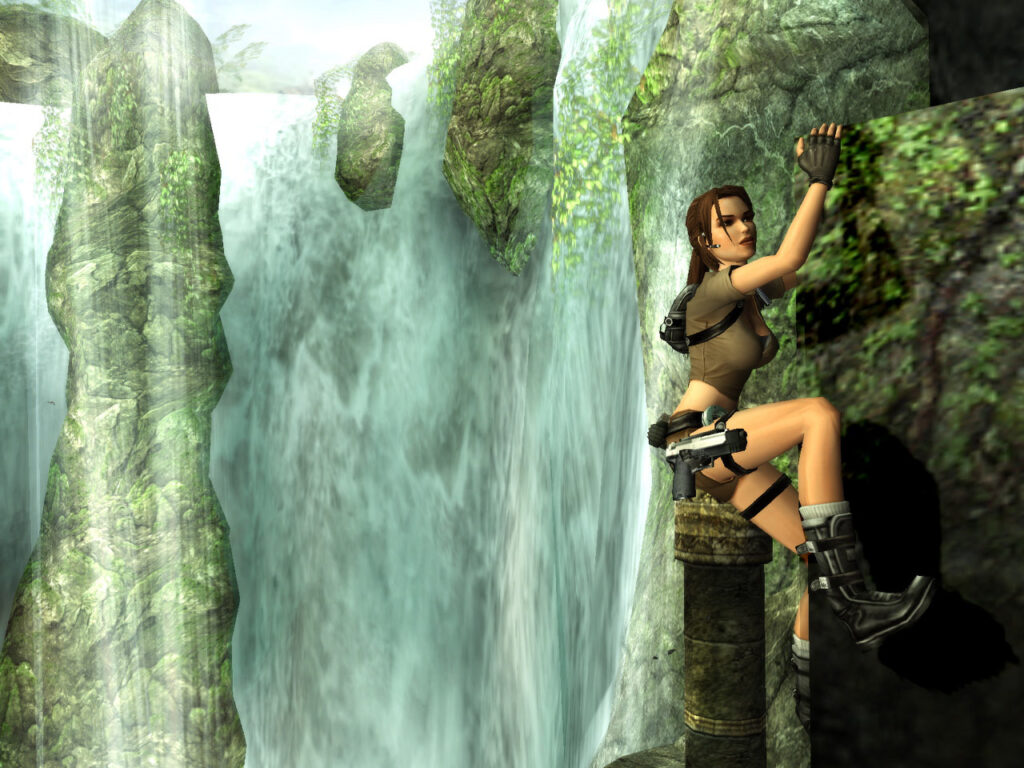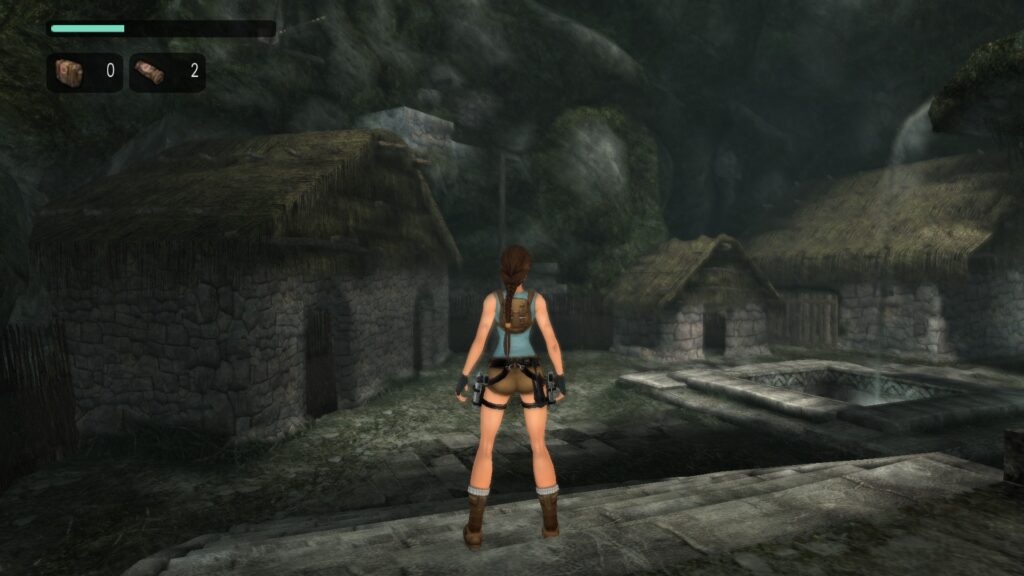So there I was in my second year at the Liberal Arts College at Concordia University, in the lovely city of Montreal. It was the fall of 2004. Having just read Neal Stephenson’s genre-defying and dizzyingly labyrinthine Quicksilver, I was inspired to put that stone and voice to use in an essay.
My professor, the delightful Geoffrey Fidler, thankfully found my somewhat experimental essay delightful and to his liking. And good grief, he even knew by heart some of the passages that I cited in this text.
Truly a remarkable man.
I hope you enjoy.

12 February, 1698, Wherein John Locke arrives at London; the Sipping of the March Ale; Delightful Chit-Chat Parleys; Property Discussed; Mercury; the Coins are Spun
Act I, Scene the First
The mists part like doors pried open by the methodical hands of an ancient pagan deity as the Isabella gracefully cuts through the white intangible surface cloud, declaring herself to London’s teeming port, her geodetic curves strutting her stuff to merchants and carousers along the Woolwich docks.
John Locke, trussed in navy blue, and featuring the kind of face that one imagines having been squeezed in a vice until it began resembling a pencil, stands along the foremast, striking the withering pose of one who’s been at sea too long. As the ship slides into the dock, the sound of London slowly increases, like God turning up the volume of the world.
‘Tis done, this travelling,’ thinks Locke, as he scrambles to touch-down upon solid rock and earth of Home Sweet Home, England. Letter tucked away in his pocket, Locke disembarks the Isabella. He stops just before the last step, breathes inwards, and plonks his right foot onto the ground. He isn’t arrested. He exhales.
London manages to look alien to him; a city he hadn’t seen in nearly the entire turn of a decade seems overgrown; a plant long untrimmed. The south-bank of the River Thames, he scribbles in his mind, was covered in a growth of new buildings that made the street appear more crowded and cramped than he had remembered it having been.
‘Enough for now though,’ the little voice in his mind utters. ‘First, a pint before the travelling doth get underway.’ He tries to recall that old Irish adage. What was it? he thinks to himself. Something about a pub and a pint. But the phrase doesn’t come to him, so he abandons the thought. He makes his way to an inn with large open windows that, despite sitting smack on the River Thames, seemingly have not been introduced to soap. Major tourist no-no. To Locke’s eyes, the windows appear so filth-ridden that it would take acid to burn through the dirt that the window has accumulated since whenever it was last cleaned. He has a while to rest while the ship is strip-teased apart of all her goods by merchant men, servants, &c.
Locke takes a seat alongside an open window that looks out away from the river, onto the street. He wants to observe it, monitor the movements like Sir Descartes might have, given the opportunity.
A bar-tender approacheth.
“What can ah bring ye, ser?”
“A March Beer is hotly desired by myne person.”
The bar-tender doesn’t even blink. The communiqué ‘twixt Locke and said Master of the Alcohols was not oblique. One beer, straight up. He shuffles away towards the bar, and invokes the Great God of the Tap. A minute later he returns, carrying the tray with all the grace involved in life or death scenarios. To the uninitiated, this would appear strange and confusing. The travelled connoisseur knows of the nigh-divine relation between bar masters, patrons, and fine alcohol, and any two well versed men of this art need not parley on the matter – the non-monetary exchange of glances is enough.
Locke rips into the glass, glad to be once again savouring the treats that one could only receive in London, and thinks once again how good it is to be home.
His right hand clutches a letter of matters most pertinent. He sips his beer, and patiently waits. During this time, his mind wanders to the text he’d been editing during his last days in Holland, over in Rotterdam. His thoughts wandered equally to the letter received from one Dr.Goodall, whose name had epitomized in one blow the news that had delivered him such fortune.
‘I know you can be no stranger to the wonderful success which God Almighty hath given to the Prince of Orange in his late undertaking to deliver our miserable and distressed kingdom from Popery and slavery, which mercy we in England esteem no less than the Israelites’ deliverance from Egypt by the hand of Moses…I presume you have heard that the King went privately from Whitehall some few days before the Prince came to St. James’s with a design for France, but was stopped by some fishermen, and then returned again to Whitehall on the Sunday in the evening, but on the Tuesday (being the day the Prince came to London) he retired to Rochester, and is said to have left the kingdom last Sunday.’[1]
And now, in parlance le Françoise, the Fit had hit the Shan. James II was on his way out the door, and William of Orange had marched in, turning an already volatile political struggle between the Whigs and the Tories into an absolutely chaotic situation, driving both parties into a nigh-feverous polemic. Already, John could see things becoming operose for Louis XIV. Let’s assume for a minute that the world, in its limited physical consistence subsists of only Europe, which for the moment we shall lovingly call the World’s Sandbox. It’s 1698, the bottle cap end of a period of religious wars. Now, assuming God exists, and isn’t exactly the plucky and sweet next door neighbour of the New Testament, letting William into the sandbox with Louis XIV is not going to lead to an Age of Ennui, and Locke knows this.
The thought reaches the period in his mind, the door opens, and yet another Silver Spoon client enters. Locke looks up – the two pairs of eyes connect, and Yes! – Contact Established. Richard Henslowe approaches, and sits down at the diametrically opposite location of Locke: Across the table.
Begin Scene Part Deux:
[The Scene, London, a Pub]
[Locke]. My ale and I assumed the worst for thee.
Henslowe. Traffik struck down the passage of time. One must needs chart out London-towne anew if business is expected to be conducted apace.
Locke. Faith trust thy received lettered Treatises?
Henslowe. So I did, sirrah. Mercurially ‘twixt thy fingers did wordes flow, a current of thoughts.
Locke. But thy thoughts! Pray you, thy thoughts on said matter!
Henslowe. Put thyself at ease. Struck I was by the wash of words that spun across myne temples like a pulsating hurricane of letters and thoughts. Such earnesty struck me, like a thundering muse roaring across the tides of politik.
Locke. Decrypt thy thoughts. Elucidate upon the thunder of the words.
Henslowe. You would tackle Adam and Eve’s world with a sword of property, a new dialectic based on the spinning of the coyn! Let us examine part seven and twenty, for these are fiery words even Hephaestus dare not pronounce:
‘Every man has a property in his own person.’ What council would you offer to those who question such words?
Locke. ‘Tis the state of nature, an inviolability not even our monarch, May God bless him, could indeed dispel. For as the treatise does declare: the labour of his body, and the work of his hands, we may say, are properly his.
Henslowe. And should The King say otherwise?
Locke. Doubting the King’s mundanity?
Henslowe: A sufferable cur of a vice
Locke. Parliament: a loaded alchymecal infernality.
Henslowe. A Motley Dare; but less us continue apace.
‘The labour of his body, and the work of his hands, we may say, are properly his. Whatsoever then he removes out of the state that nature hath provided, and left in it, he hath mixed his labour with, and joined to it something that is his own, and thereby makes it his property. It being by him removed from the common state nature hath placed it in, it hath by this labour something annexed to it, that excludes the common right of other men: for this labour being the unquestionable property of the labourer, no man but he can have a right to what that is once joined to, at least where there is enough, and as good, left in common for others.’
Most heady.
Locke. Not for the weak of head.
Henslowe. A titanic grasp will be required. Miniscule intellects of ash will be swept away.
Locke. A new ethos to challenge the firmament comes slowly. But I dare not print in myne name. Not for the moment; too many packs of braying doggerel populace the isle.
Henslowe. And the Essai of Understanding?
Locke. I would have it passed by Fraser in the first.
Henslowe. And the Treatise?
Locke. Pertaining to that, there is no need to rush. Filmer may wait. But let us sweep aside this beguiling distraction.
Henslowe. Most agreeable. Let us to the text! Paragraphe the eighth and twenty!
‘That labour put a distinction between them and common: that added something to them more than nature, the common mother of all, had done; and so they became his private right.’
Locke. And will anyone say, he had no right to those acorns or apples, he thus appropriated, because he had not the consent of all mankind to make them his?
Henslowe. You finish the thoughts as the coruscating river flows to the mouth of the delta. Holland has been most kind to the grace of your wits. But praytell reveal to me – how will the counties of men abide with such rules? What strength can word offer us ‘gainst a-nother Ket of Norwich?[2]
Locke. But here is inscribed the Clincher. There must needs be an agreed upon contract. Less than that cannot be suffered.
Henslowe. And if ‘twas less than the agreed upon sum, and said monarch were to give the Universal Finger and Wattle off: Twch Luck, Begch?
Locke. For such recusant woes to be caused by a monarch Wou’d be but another edictal-stroke of tyranny.
[Enter Bar-Tender]
Bar-Tender. Seconds in refreshment, ser?
Locke. A cup, a cup most kind, a cup most strong, I would have my companion Henslowe trough!
Bar-Tender. ‘E alright?
Henslowe. He is of the philosophe. Are they ever quite alright?
Bar-Tender. A wee quacky lot, I tend ta think.
Locke. Bar-Tender, percase uncover the whirls and gears within thyself! S’pose I say to thee: I will let you thee own as thy would earn, and no monarch could say “Thy handicraft is avail to mine breast!” to only turn, stealing away all that hand and soul have built.
Bar-Tender: Thou meyns tellin’ tha King ta piss off?
Henslowe: Most assuredly.
Bar-Tender. An what’s ta make ‘im care?
Locke. Tis not a question most urgent? And the resolution found in the bondage of ink and paper; Parliament and Monarch; an inviolable agreement!
Henslowe. But what of the agreement of exchange? For surely, as spelt in writ here, fourty and seven: ‘And thus came in the use of money, some lasting thing that men might keep without spoiling, and that by mutual consent men would take in exchange for the truly useful, but perishable supports of life.’
Locke. And thus my hopes for the throne of William of Orange. Pray tell fair Bar-Tender, what coynage is carried upon thee?
Bar-Tender. Wot else but shillings.
Locke. Mayhap I might glance upon them?
Bar-Tender. To wot end?
Locke. To reveal the glories Metis unveiled upon myne mind in silver and fire.
Bar-Tender. Naught but old shillings.
Locke. Glance thee but closely upon the coyns! What canst thy not observe?
Henslowe. A faded hue, as though antediluvian soot.
Bar-Tender. They’re but shillings.
Locke. See thee both not more to the open eye?
Henslowe. ‘Tis a coyne, Ser Locke.
Bar-Tender. Aye. Tha gent ‘as it right.
Locke. See not how chipped it is? And observe! What is the make?
Henslowe. Most like James the Fyrst.
Locke. Observe the coyns minted at the Munttoren, in Muntplein. Prostrate thine eyes before this Gulzen, of Prussian domain.
Bar-Tender. I see naught but finely crafted coyns.
Locke. Thus the key unveils! Coynage, myne good sers!
Henslowe. English coynage?
Bar-Tender. But on what shall ye buy yer beer?
Locke. On coyns most new, should William, God Bless, take such initiative!
Bar-Tender. Seconds on March beer, then.
Locke. Quite. And of course, my companion, the Gentle Henslowe, shall partake in your splendid delicacy.
[Exit Bar-Tender]
Henslowe. You suggest a connexion of sorts?
Locke. Inescapably.
Henslowe. Thus thy passage for paragraphe ten and five?
Locke. What says the litany of the treatise?
Henslowe: ‘But since gold and silver, being little useful to the life of man in proportion to food, raiment, and carriage, has its value only from the consent of men, whereof labour yet makes, in great part, the measure, it is plain, that men have agreed to a disproportionate and unequal possession of the earth, they having, by a tacit and voluntary consent, found out a way how a man may fairly possess more land than he himself can use the product of, by receiving in exchange for the overplus gold and silver, which may be hoarded up without injury to any one; these metals not spoiling or decaying in the private hands of the possessor.’ Does thee belay the notion of money as a contractual device?
Locke. In fact, I do just such. A means to bind, to preserve, and as the eminent Hobbes would have sought – a prevention of chaos.
[Enter Bar-Tender]
Bar-Tender. An ‘ere are yer drinks. Tha’ll be 3d. per stein.
Henslowe. Allow myne purse to sing jovially for us both! To company long unseen!
Locke. I will respectfully acquiesce to said decision. To company dearly re-united!
The stein are clunk.
[Exit Bar-Tender]
Henslowe. Tell further, of the money’d contract.
Locke. A guarantee that costs might be stabilized. Much rests here on Sir Isaac and his Mint.
Henslowe. So thus, should men agree to a standard money system –
Locke. A re-coyn’d system – abandon to recesses James, Elizabeth, and their coyns. Consider England under one monetary whole; man paying man in standardized units of coyn.
Henslowe. Tempered spirits abound.
Locke. Contracts thusly re-inforced!
Henslowe. And where is contained the ethos of Christendom?
Locke. Praytell which ethos thee does speak.
Henslowe. What conclusion left when said ideas convey the Rumble in the Jungle twixt Iesu Christus and Mercantilism?
Locke. For such cause was a proviso enscribed within paragraphe one and thirty:
‘The same law of nature, that does by this means gives us property, does also bound that property too. God has given us all things richly, 1 Tim. Vi. 12. is the voice of reason confirmed by inspiration. But how far has he given it to us? To enjoy. As much as anyone can make use of to any advantage of life before it spoils, so much he may by his labour fix a property in: whatever is beyond is beyond this, is more than this share, and belongs to others.’
Henslowe. What to make of this?
Locke. Here is myne beer. Master Descartes’s scientific method hath given myne person the ability to conclude what is and is not excess. Thus I order not beyond what might be drunk. Thusly I take not from the well more than is necessitated.
Henslowe. And what if resources are to run dry?
Locke. England is tapped into resources a-plenty that such a scene shall not dally before our eyes. Easy thy mind on such a subject. And if myne own word is a matter of doubt, trust in Master Descartes, whose own pen offers the same conclusion.
Henslowe. Let us recursively examine aforementioned propositions of the Treatise:
A contract ‘twixt men must be bound, and items will thusly exchange hands properly and with surer swiftness should the Mint reforge a sterling standard.
Locke. It is almost operatic in nature. A Canto fermo, perhaps? Mayhap a chaconne or libretto from Purcell’s Dido and Aeneas?
Shake the cloud from off your brow,
Fate your wishes does allow;
Empire growing,
Pleasures flowing,
Fortune smiles and so should you!
Henslowe. This alchymecal system will thusly re-inforce social stability; provided Parliament buffers said self ‘gainst King. This politikal buttress shall build the sought-after system of economic stability that myne proposal doth seek.
Locke. Dear Henslowe, thy reach doth extend beyond the tail of the beast!
Henslowe. But to what aim, dear Locke? What aim?
Locke. That man might know a safety and assured security of private property! For that the blade doth point! Here doth I present to Dido and Aeneas the wedding of Hephaestus and Athena!
Henslowe. The day grows dim, dear Locke. Feel thee not the beckoning of Morpheus?
Locke. I would not deny such faintness of spirit. Let then this dialogue tarry till morn.
[Exeunt]
Act I. Scene III
Locke and Henslowe depart from the tavern and cavort down the street, away from the docks, through a bustling crowd that Locke remarks, “looks not unlike an army in disarray.” This is followed by a period of silence between the two men as they struggle against endless waves of passer-by’s, merchants, farmers and nobles on horses too big for their egos. They arrive, finally, at their destination, a ramshackle house that features a society of Philosopher Naturale. Henslowe and Locke part ways, promising each other that within a fortnight their conversation shall reconvene.
“Most agreeable” says Locke.
“Most excellent” says Henslowe. And with that whammy of a closing comment, he turns about face and heads off – presumably, Locke thinks (and hopes) – for home.
As Henslowe’s bobbing head fades into the lapping waves of street-travellers, Locke turns and walks inside, thinking only of how excellent it will be to cannonball onto a feather’d mattress. He enters the kitchen, praying to whatever God might exist, that it will spare him from having to suffer the sight of a dead dog with a concave lense in its stomach.
The kitchen is blissfully empty of any such phantasmagorical sights. Instead, Robert Hooke, his head a giant stratus cloud of hair, is sitting quietly at the table, reading. It looks like something Latin. He looks up as Locke enters.
“Ah, you’ve arrived” he says. No inflexion. It’s a matter of facts at play.
Locke looks about the room. His eyes wander over the cabinets. He declares: “Do you carry any tea?”
“What sort do you seek?”
“The Indian sort, that letters spoke England had begun carrying.”
“Let us ascertain the status of the teas.”
Hooke and Locke begin an all-out assault upon the kitchen, canvassing the cabinets and bureaus. As they burrow through all the dark corners of the kitchen, they engage in a conversation regarding Locke’s return from exile, whether his manuscript was completed, and what new thoughts could be expected in the Second Treatise. Locke lowers his voice – most likely, Hooke thinks, for dramatic effect.
“Well you see, I rather think that much was changing whilst abroad. I have had much time to consider the matter concretely whilst sitting in the United Provinces, whittling away to paper the Essai Concerning Humane Understanding, on the matter of money and property, and the troubles of James II. All these men, these nobles, lords, applying their titles to them, each from his own county, arriving in London-towne, thinking “The king shall rue the day he laid eyes upon myne person.” These men were too busy thinking of themselves than of how to actually live with others. And what does the Englishman want? A plot of land to call his own without a by-your-leave, and the ability to provide for himself and his family.”
Hooke is desperately intrigued. The arrival of Locke is a panegyry of the Intellectual Spheres that he hasn’t seen since the last time Isaac came around, and even then it was too difficult to know what sort of Rubik’s Cube phenomenon was evolving in his head (since life, the universe, existence, and the meaning of felines percolated like a giant swelling newly created cosmos, shaped by a maker no one could find in Isaac’s trapezoid-like mind).
Locke is still talking. Hooke thinks that exile abroad has made him hungry for philosophik candour.
“ – Consider the feasibility of a country whose monarch is held at sword-pointe by a parliament, and God help him should he be of the Papist disposition.” His voice drones on in a way that might seem partly comprehensible were Locke not teetering on the precipice of inebriation and extreme exhaustion.
“The only way I can see this occurring, I think, would be to instil a system of the said following: a standardized monetary system, a stable bank, and instil agreements based on writs, contracts, and mayhap a relation between a proposed bank and the monarchy. It should be a grand way to end the incessant fighting twixt the nobility, the king, with the parliament acting as a buffer for both.”
As Locke sputters away like a broken sieve, words fluttering out beyond control, his mind in a kind of unexplainable overdrive, Hooke and Locke zero in on the tea, stashed away behind some kind of enamel –hued jar that looks like elephant tusk that’s been degraded to the position of glorified tea-dispenser. The water is put on the stove. The sky outside has faded to a canvas of twilight, and is splashed with a net of yellow and white stars. Locke plops into a chair, taking a moment to (perhaps in vain) organize his thoughts.
Hooke removes cups from the bureau and says: “Let us propose that such events were to take form and expand from seeds of an idea to fruits of realization. What reasons would you give for all oeconomic divisions to behave amongst themselves?”
Locke looks taken aback by this. But since he’s sitting against a wall, there’s not much to lean back against. He takes on a bewildered look, like someone who’s just been thrown from the top-floor of the Intellectual Ivory Tower, and has begun a windy descent towards pavement that seems much longer than the few seconds during which the body sings with the sky. It’s a nonplussing moment for him.
The kettle whistles – although upon closer observation, two refined natural philosophers such as Hooke and Locke would be more likely to observe that water – taken a different elemental form, is actually being released from the tea-kettle. Crushed tea leaves are deposited into a separate piece of china. The leaves are then hydrated by boiled water, and chymicals of assorted varieties are released from the leaves, and taint the water a hue that looks like burnished sunlight. Cups are placed upon the counter, strainers armed atop the circumference of each, and the tea is poured. The conversation resumes.
This is how it goes down:
Hooke: “The thought was: How to get classes of society to behave twixt one-another.”
Locke: “Make it in their best interests.”
Hooke: “How?”
Locke: “Contracts. Not of any social, moral kind. If you give members of society that which they seek, they will be more likely to behave in a more malleable fashion.
Hooke: “And you think that this can be arranged through a unified structure involving banks, restrained monarchy & nobles alike, and property?”
Locke: “Giving citizens of England the ability to hold land is necessary. Values and payments can be sustained, monitored and controlled through a national bank, one which could also cooperate with the nobles and monarchy. Those groups, agreeing with the bank, to utilize a standardized monetary system, could economically unify England, thus reducing tensions betwixt classes on matters concerning payments, trading, and financial security. The pound could be set to a fixed price, and trade relations between our kingdom, the United Provinces, France, Portugal, Spain, and Russia could continue apace, but with less risk of confusion among merchants of means of pay.”
Hooke: “Your words belay a dare to the monarch.”
Locke: “There is a most transparent urgency which is required as the key to this system: a systematic re-coinage of all English coins. While such a system might survive should the bank adopt perhaps some kind of system of notes; where security is concerned, such a format would surely be armour ‘gainst counterfeiters.”
Hooke: “Yet we lack the hindsight to deduce such results with any certainty. What gives you hope of seeing an accord amongst society for such a thing as this?”
Locke: “Implementing such a system of security with bank-notes would make the nobles feel secure in whatever wealth they own or pretend to lay claim towards. Rather than transferring pounds manually by cart from one location to another, a system of banks spread throughout the kingdom could accept a signed note that only the person signed on the bank note could withdraw from any official bank location. Meanwhile, the layman, less concerned with bank-notes, could rely on coins that were no longer clipped, and were not remnants of Charles, or Elizabeth, but a standard, permanent system of silver. A new social system might be realized with the aid of a systematised oeconomic system that serves all classes of society and is moderated and maintained and supported by each.”
The Dramatis Personae in the room grows quiet. In the silence of the kitchen, two brains – if listened to carefully – can be heard percolating like water bubbling in a slowly boiling pot. The wind gently pushes against the closed windows, pushing inwards, seeking to escape the ivory night that has taken form outside the residency of the Royal Society.
“In layman’s parlance,” says Hooke, “shall we call it a night? Should your mind unleash itself for a second round, I cannot guarantee that my grey-matter will not, in fact, break from its confines and begin pamphleteering loud accusations of intellectual harassment.”
Locke smiles, and acquiesces. He raises himself up from the seat like an ancient leviathan, and slowly tumbles across the room. His body has seemingly severed political ties with the mind (which, Locke determines, explains his ability to process thoughts like a spreading wildfire while disavowing any real considerations towards physical animation). They hobble down a poorly lit hallway, Hooke leading the way with several candles, until they arrive at two doors in the hallway – one across from the other. Both men nod and share that unexplainable synchroneity of thought which says: “Good night, see you in the morning. We’ll continue this then” without actually going through any of the motions required in an actual verbal exchange.
Within moments, both men have crashed down upon their mattresses, and have entered an ebony oblivion of sleep.
[1] Dr. Goodall of the College of Physicians, who invites Locke to stay with him upon his return to England. No relation to apes, gorillas, or primates involved. Only Whigs. Cranston, 306.
[2] When Robert Ket and his army of rebels set of camp outside of Norwich, [in 1549] the citizens of the city reacted in a way most disheartening to the civic authorities: many of them joined Ket, and would later welcome his occupation of the city. That this could happen in England’s second most populous city was a shock to local leaders and to the Crown. Bouchard, Greg. The Willingly Occupied: Ket’s Rebellion and the City of Norwich. 2004



